Dear friends,
Probably the best-known of all the ancient sites in Türkiye is Ephesus, so of course we had to visit. Unlike most of the sites we visited along the coast, where we were often the only visitors, this place was pretty busy with tourists, many ‘selfie’ occupied.
Historical accounts and archaeological remains of significant traditional and religious Anatolian cultures beginning with the cult of Cybele/Meter until the modern revival of Christianity are visible and traceable in Ephesus, which played a decisive role in the spread of Christian faith throughout the Roman Empire. The extensive remains of the Basilica of St. John on Ayasuluk Hill and those of the Church of Mary in Ephesus are testament of the city’s importance to Christianity. Ephesus was also the leading political and intellectual centre, with the second school of philosophy in the Aegean, and Ephesus as a cultural and intellectual centre had great influence on philosophy and medicine.
The first visit was to the Basilica of St John on Ayasuluk Hill entering through the Gate of Persecution
Welcomed by one of the many cats at the site
Arches into what would have been the atrium at the entrance to the Basilica
A photo opportunity for these tourists
A part of the excavated ruins of the Basilica
Within the ruins, a marble-lined font, with steps down either side
A colonnaded street with some of the paving still intact
From the St John’s Basilica, you can look across to the Isa Bey Mosque, and in the
distance (upper left) the sole remaining pillar of the Temple of Artemesia
The Temple of Artemis which is also known as the Temple of Diana is one of the 7 wonders of the world and the first marble temple of the Ancient world. The Temple had 127 Marble Columns and it faced to the west. The Temple was designed and constructed in the 6th century BC at the expense of Croesus, the wealthy king of Lydia.
Destroyed by a deliberate fire in the 4th century BC and then rebuilt, the great Ionic Temple survived until Late Antiquity and the Gothic invasion of c. 267 AD. Once again rebuilt, in 401 AD it was torn down for the last time by a Christian mob. Today only the foundations and a solitary column stand as a reminder of the site where once stood the greatest temple in the ancient Mediterranean, which drew pilgrims from far and wide.
The remaining column of the Temple, the Isa Bey Mosque, and the Citadel above St John’s Basilica beyond
A model of the Temple shown in the Museum and also there …
… the splendid larger-than-life statue of Artemesia
Located within what was once the estuary of the River Kaystros, the magnificent city of Ephesus comprises successive Hellenistic and Roman settlements founded on several locations, which followed the coastline as it retreated westward. Excavations have revealed grand monuments of the Roman Imperial period including the Library of Celsus and the Great Theatre. The Ancient City of Ephesus is an outstanding example of a Roman port city, with a sea channel and harbour basin. Paved streets wind past squares, agoras, baths, brothels, and monumental ruins.
Once again, welcomed by a handsome cat sleeping on a truncated pillar
Impressive gateway, our friend Roger gazing up at a tall carved pillar
Remains of the Bath of Varius
Many carved stone tablets can be seen along the roadway
Carving of the Goddess Nike
Curettes Road leading to the Library
Ruins of the Bathhouses
Just a few of the communal toilets. Water from the bathhouses ran behind them
Entrance to the Temple of Hadrian
The splendid Celcius Library
The city has hosted countless magnificent structures, such as the residences that are thought to have been inhabited by wealthy families, in the area called Terrace Houses. The Terrace Houses with a total of 78 rooms were built in a very luxurious way. Archaeologists preserved the wall drawings while excavating.
excavations have been intensive in 7 houses owned by the richest Ephesians. These were high-ranking officers, governors, and rich tradesmen. The size of the homes are starting from 1000 square feet and the largest one was 6000 square feet. They date back to the 1st century AD and were inhabited until the 3rd century AD. The houses were destroyed and abandoned by a major earthquake and tsunami in 262AD.
Many were two-storied houses and most had a courtyard surrounded by rooms without windows opening onto a courtyard. Above the courtyard, there was an opening for fresh air and when it rained, rainwater was collected either in a pool or a well. The floors of the homes were decorated with marble and mosaics, and the walls with stucco mythological scenes. Wealthy Roman homes were made, quite often, of brick with red tile roofs and had a front door, bedrooms, an office, a kitchen, a dining room, a garden, a temple, an atrium, a toilet, a private bath, and underfloor central heating.
Looking down at some of the rooms, the walls still showing elaborate wall paintings
Intricate mosaic floors
The floor of a bathroom with a lovely scene including Neptune
Fabulous floor designs, tiles, and mosaics in black and white
One of the walls had interesting graffiti scrawled on it showing wares and their transport,
– reproduced on a signboard with translation
A small part of the huge theatre, the biggest in Asia Minor which could seat 24,000 people
Looking towards the commercial agora, with some pillars and arcades re-erected
The remains brought to the surface during the excavations of the site of Ephesus which lasted more than a century, were sent first to England and then to Vienna. Since 1929, many have been gathered in the local Ephesus Archaeological Museum where they are exhibited in seven rooms depending on where they were found. It was a fascinating place to spend some time and I will just show a couple of photos below.
Several of the statues of women
The magnificent Zeus, a leg and arms missing but appendages intact which is rare
An impressive bust of Socrates
A beautiful blue glass and metal tray
Some tiny coins, perhaps the oldest in the world, dated 6-7th Century BC
Bronze surgical instruments which belonged to the Ephesian doctors Rufus and Soranos
A cheeky smile from Yunus behind the statue (right) of Eros & Psyche, and (left) one I can’t remember
the name of but looks to me very much like someone scratching a mosquito bite on the leg
We spent a pleasant lunchtime visit to the small village of Sirince located about 8 kilometres from Ephesus. The area around the village has a history dating back to the Hellenistic period (323–31 BC). Pottery finds made around the village between 2001 and 2002 indicate the presence of seven villages and nine farmsteads in the area dating back to ancient and medieval times. Today the village prospers through agriculture (olive oil, peaches, wine) and tourism. It is well-protected and a rare and attractive example of Ottoman Christian architecture.
A view over the town’s houses
Plenty of accommodation for local travelers and tourists
Some of the restaurants are beautifully decorated
Plenty of small shops along the main street with local crafts and foods
Tempting interior of a shop selling wooden and leather goods and jewellery, amongst other things
Local fruit wines are very popular
A festive-looking wine shop
Plenty of fresh grapes as well
Does anyone need a hat?
Or perhaps an ice cream?
A competitor in the ice cream business, offered me a free sample
And, of course, a pretty little cat hiding under a table
We also visited a carpet cooperative close to Kusadasi where we had stayed overnight for the visit to Ephesus and learned how the dying and weaving was done, about traditional patterns, and were shown a huge selection to suggest we might like a souvenir to take back home with us. Were we tempted?
Thread from the silkworms
Coloured skeins of wool
Showing the natural dying tubs and the colours emerging
Carpets of every pattern, colour, and size to choose from
A local craftswoman knotting and cutting the thread as she works on a carpet
Silk threads hanging above another carpet being worked on
Unroll and lay, unroll and lay …
… unroll and lay – we had a vast display to gaze on and consider
Was I tempted – yes. Bought this beautiful, colourful runner for the entry hall of my NZ apartment
And that, my friends, brings us to the end of this installment of my travels and the conclusion of the wonderful voyage of discovery on the Turquoise Coast. From here, four of our group continued together to the magical Cappadocia in Central Anatolia which will be the theme of the next couple of stories. I will show and tell of the spectacular landscape, the hotel in a cave, underground villages, painted cave churches, a hot air balloon ride at dawn, and more.
If you have enjoyed reading this and my other entries in Joanna’s Journal, I would love to hear from you in the comments section below. I will respond to your comments of course.
Until soon, all good wishes,
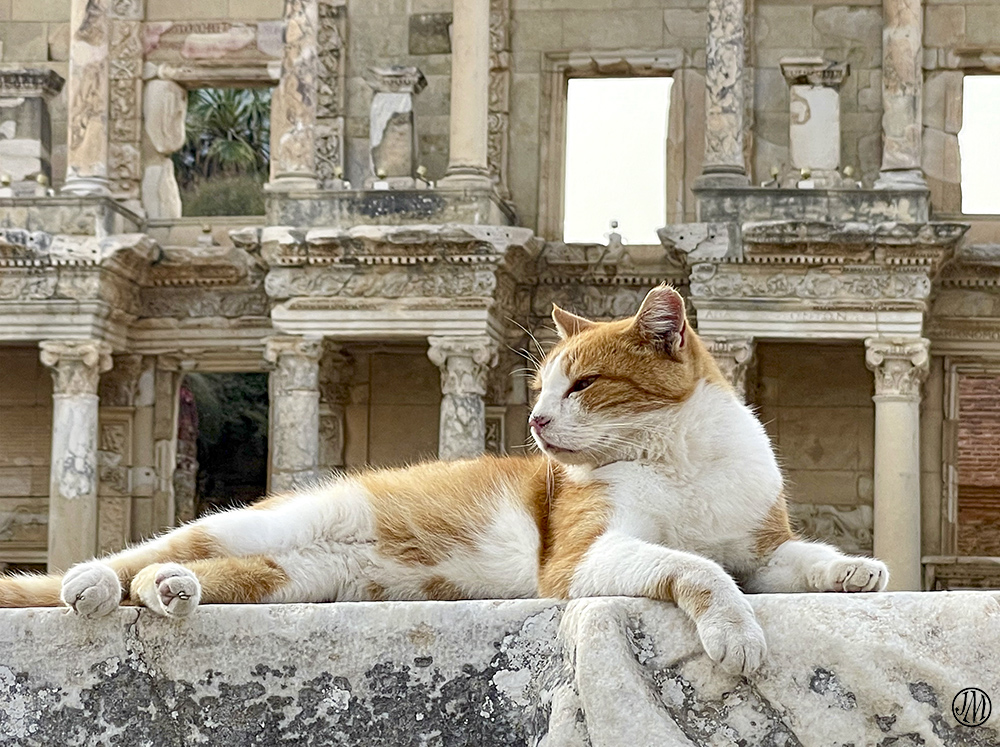
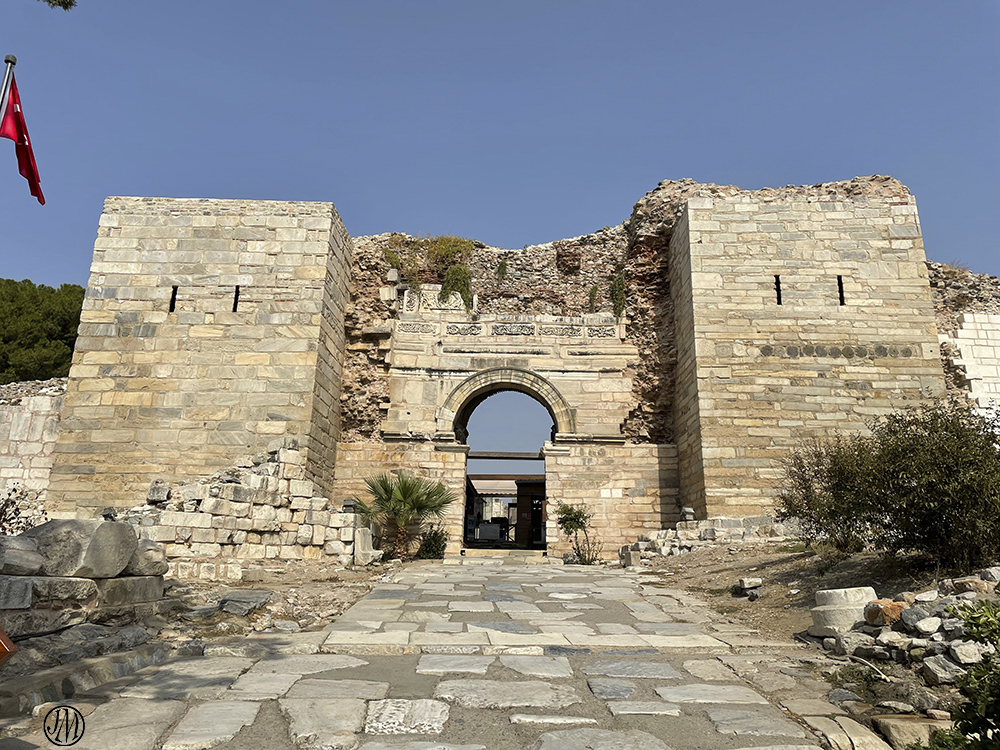
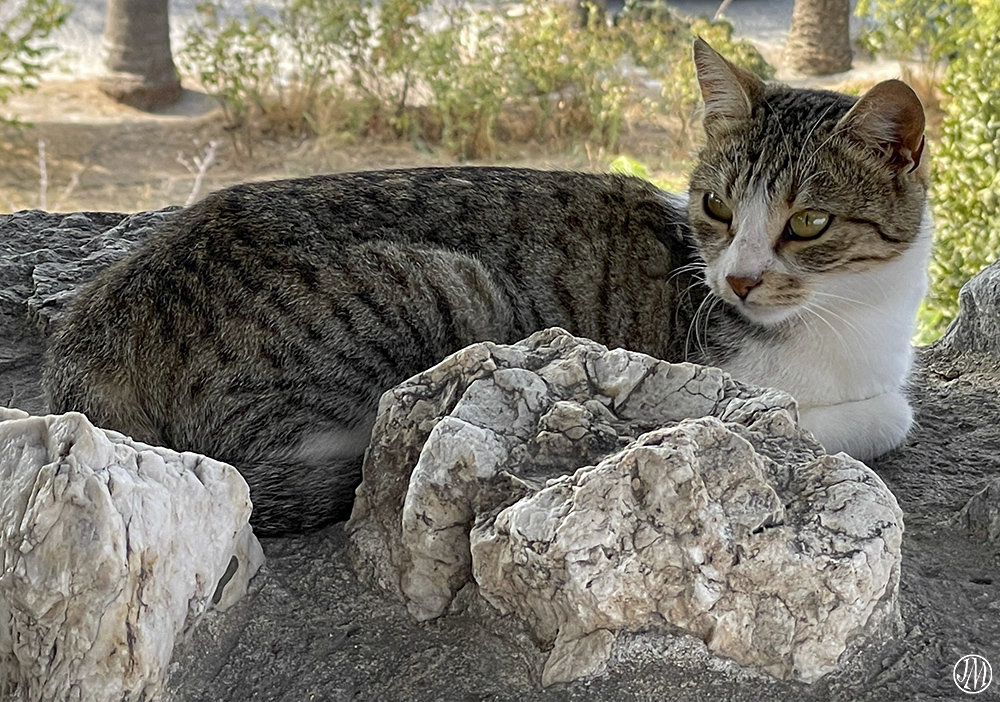
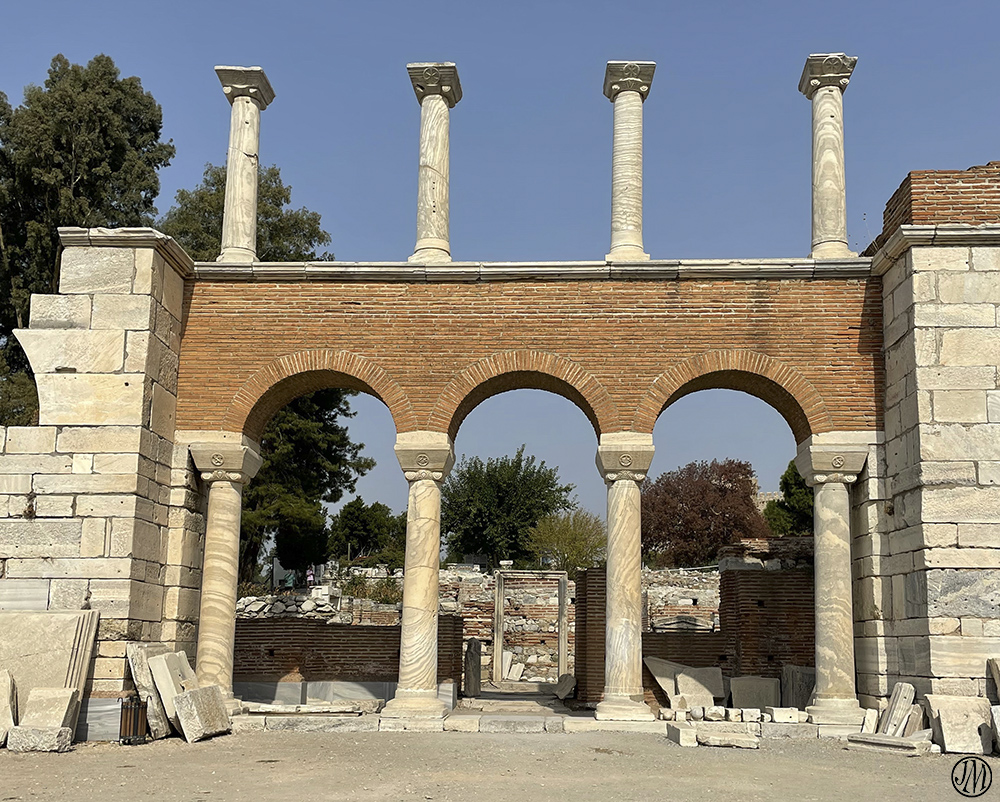
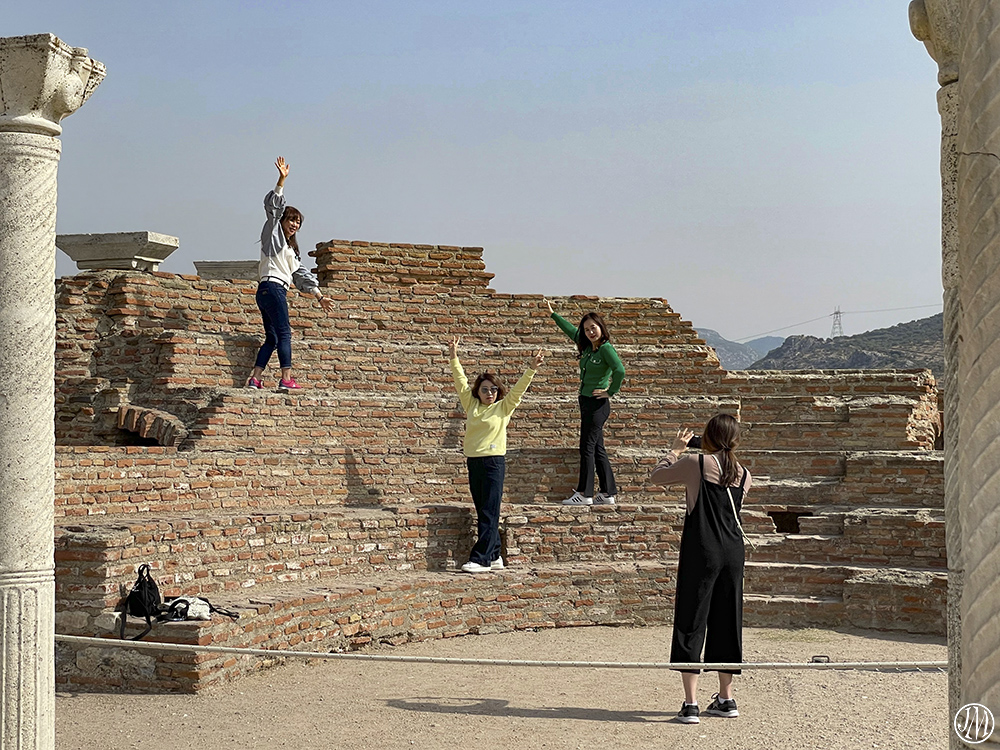
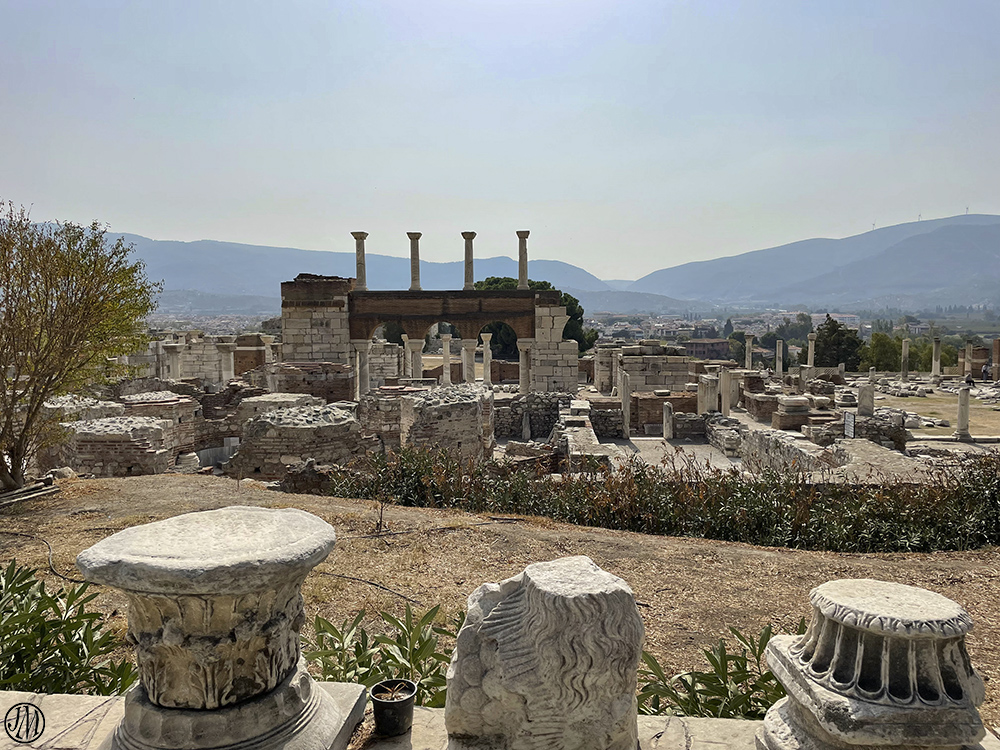
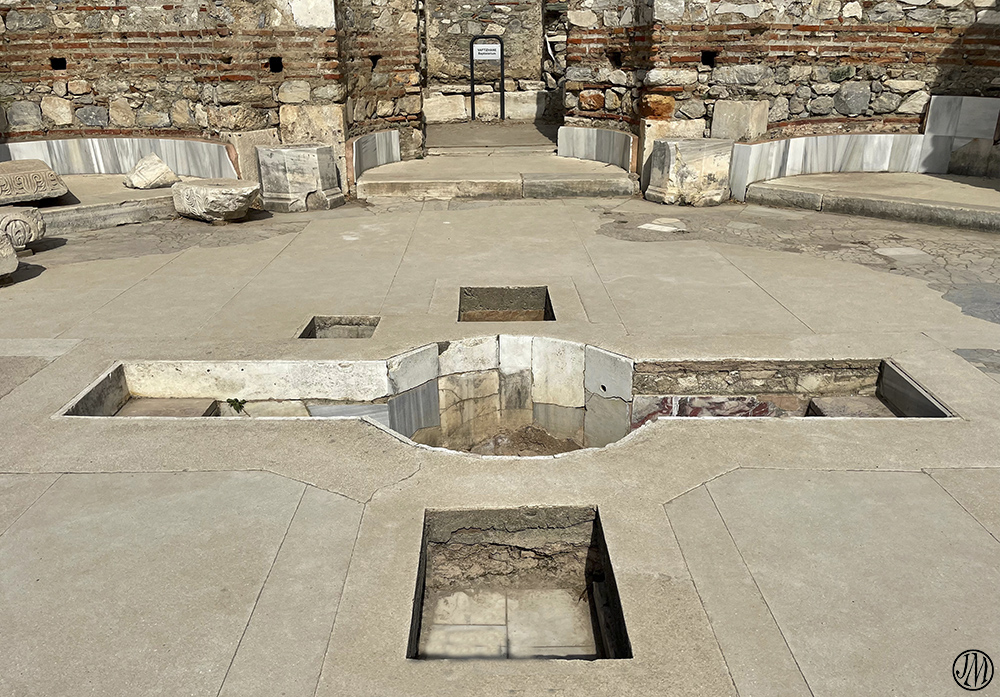

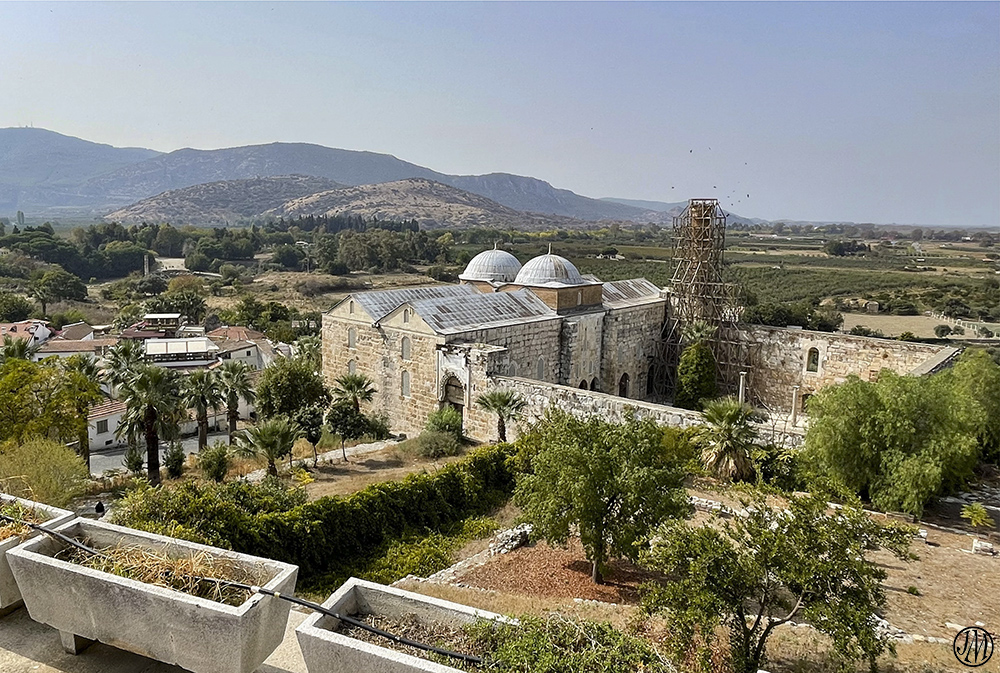
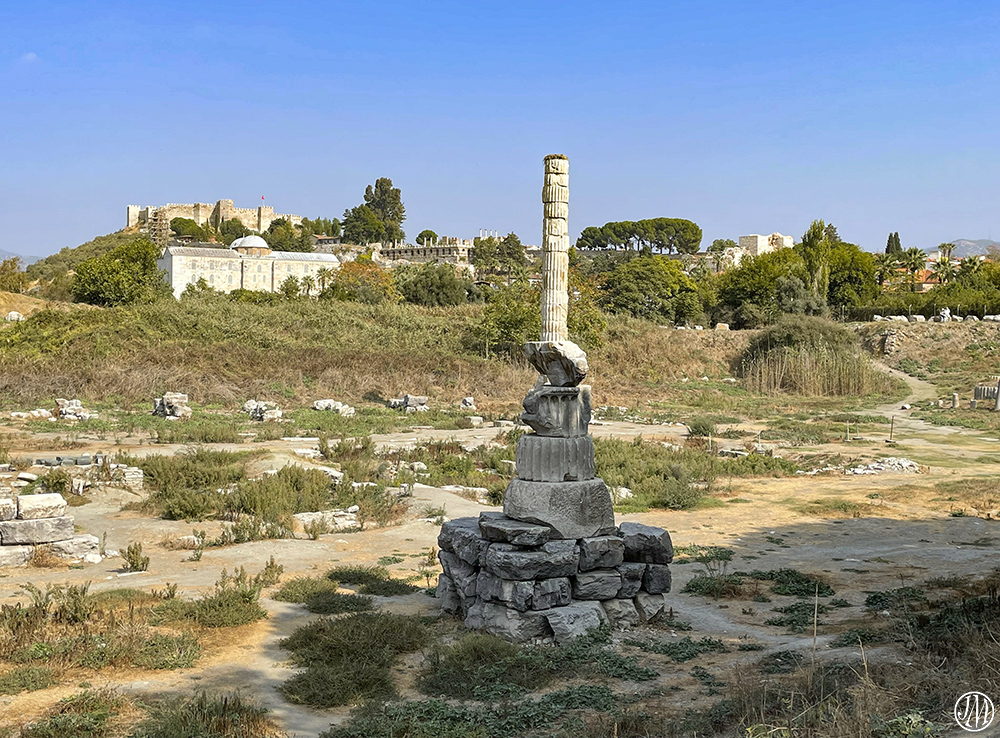
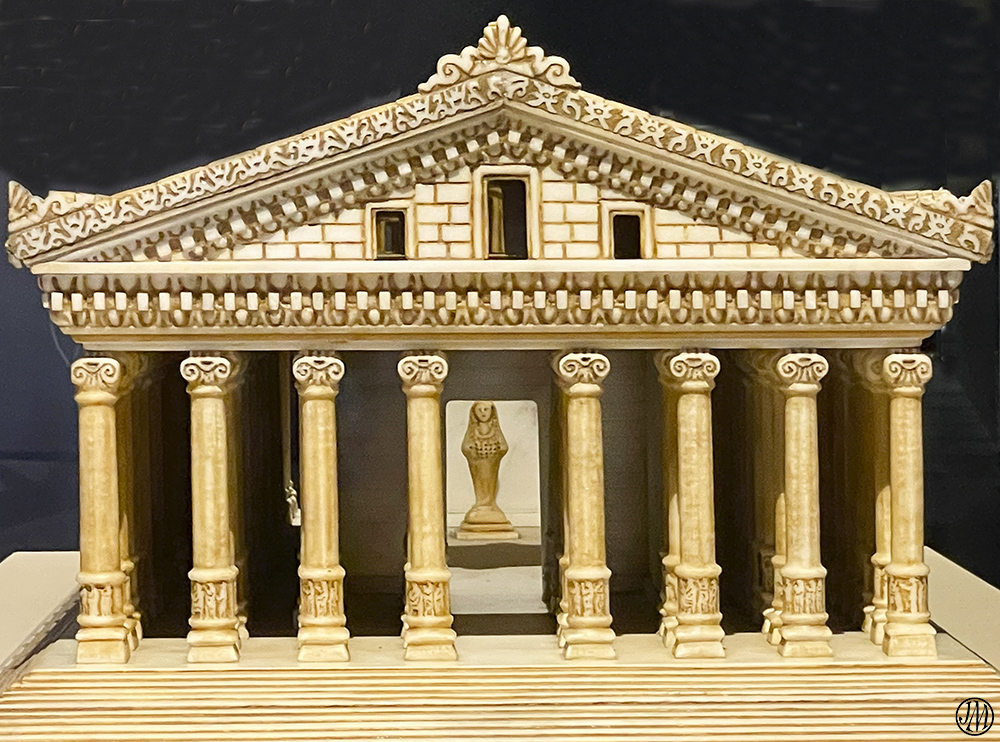
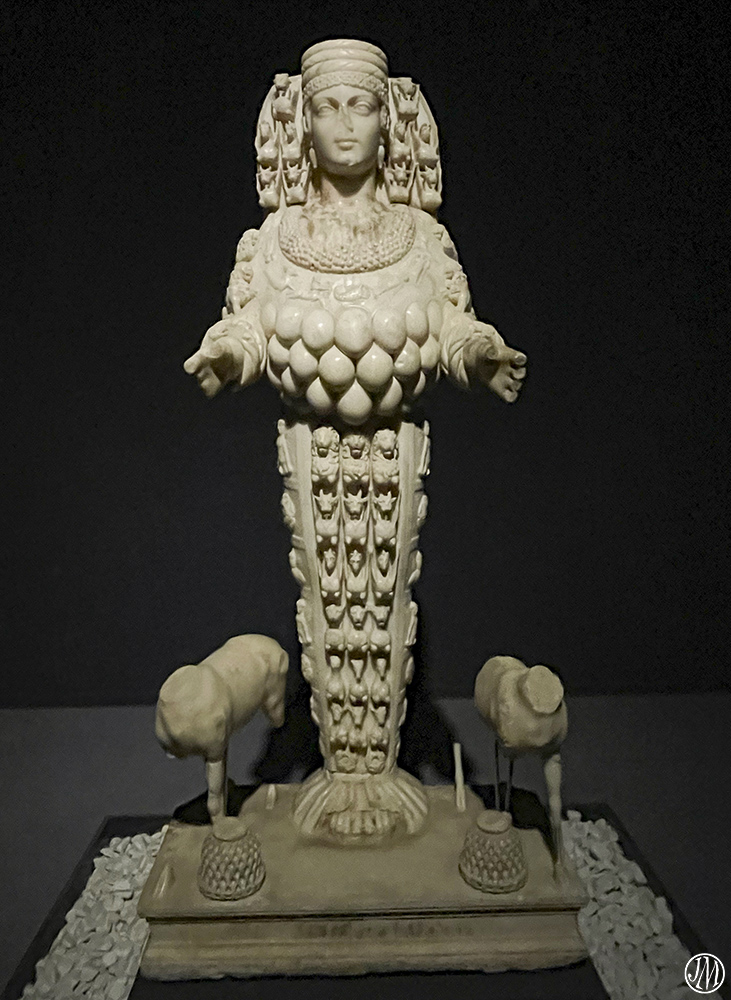
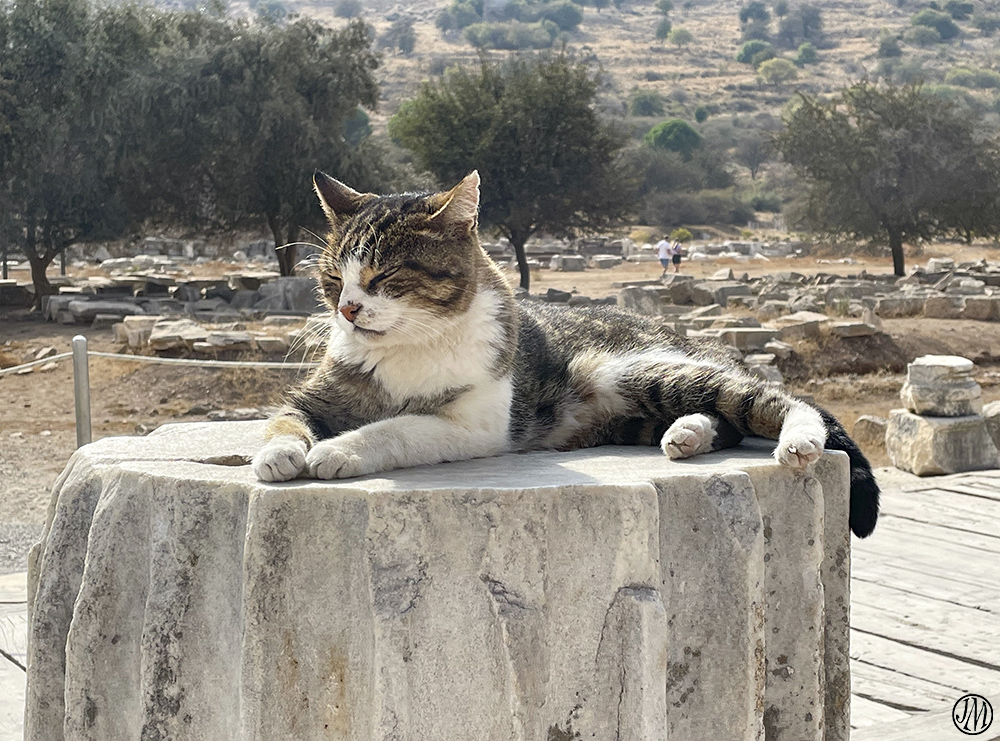
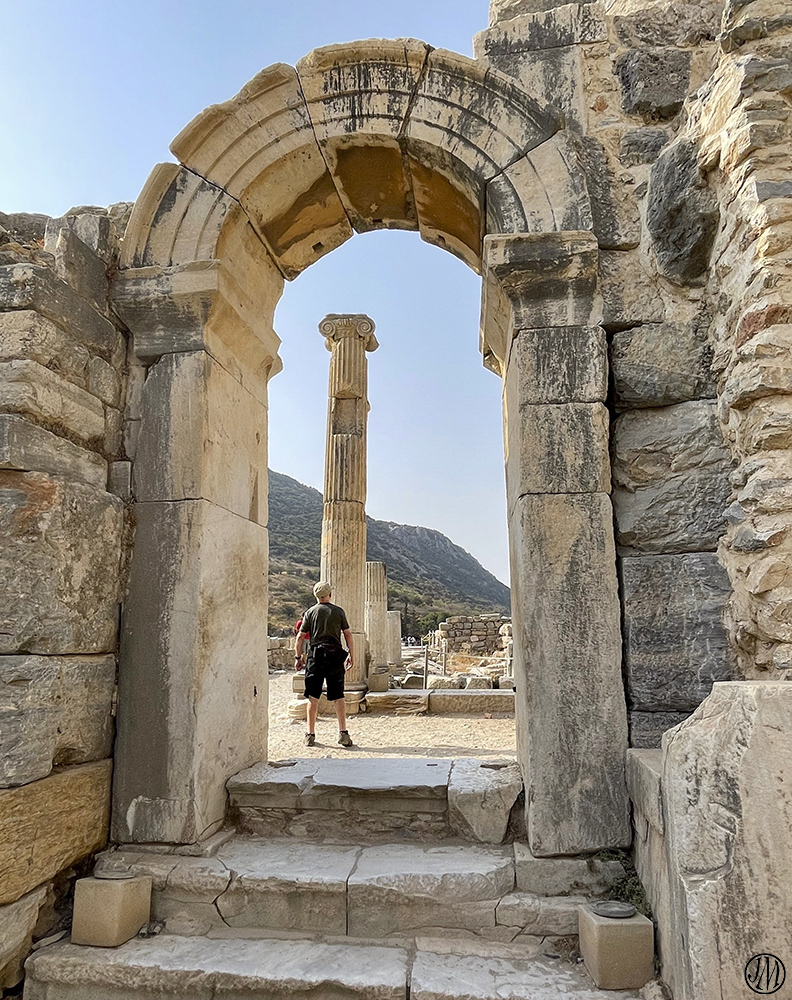
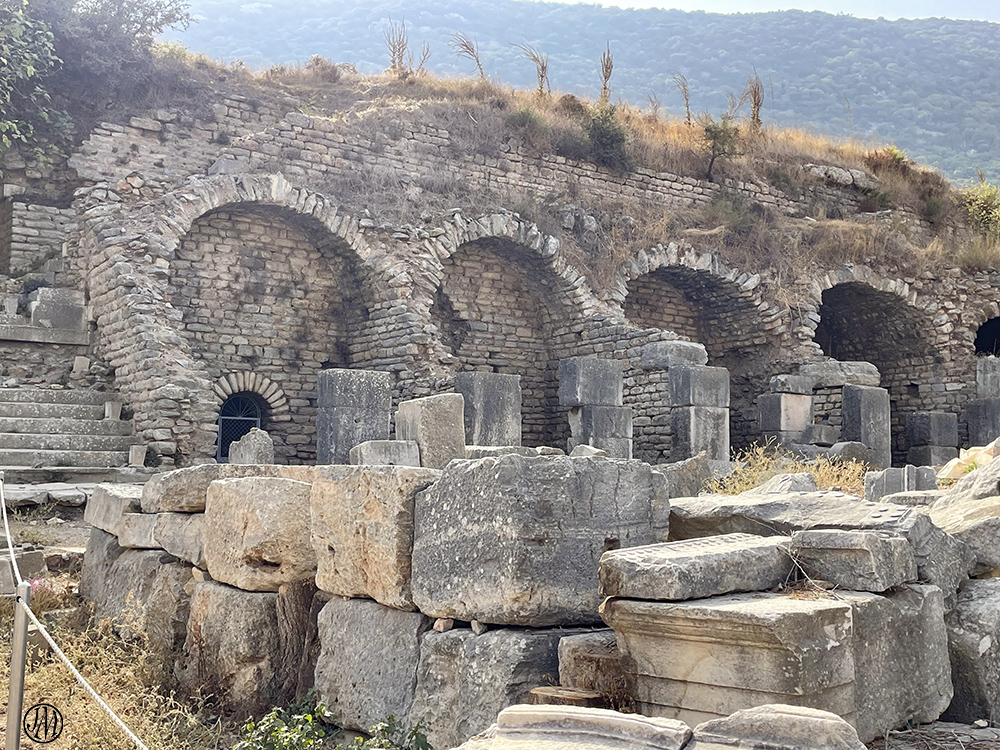
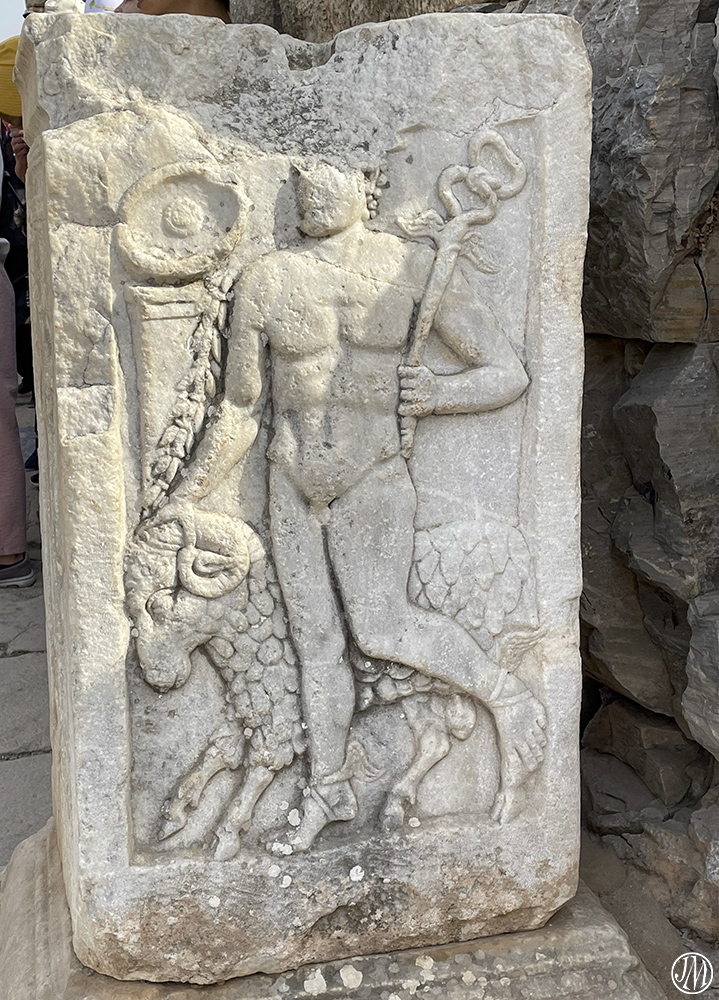
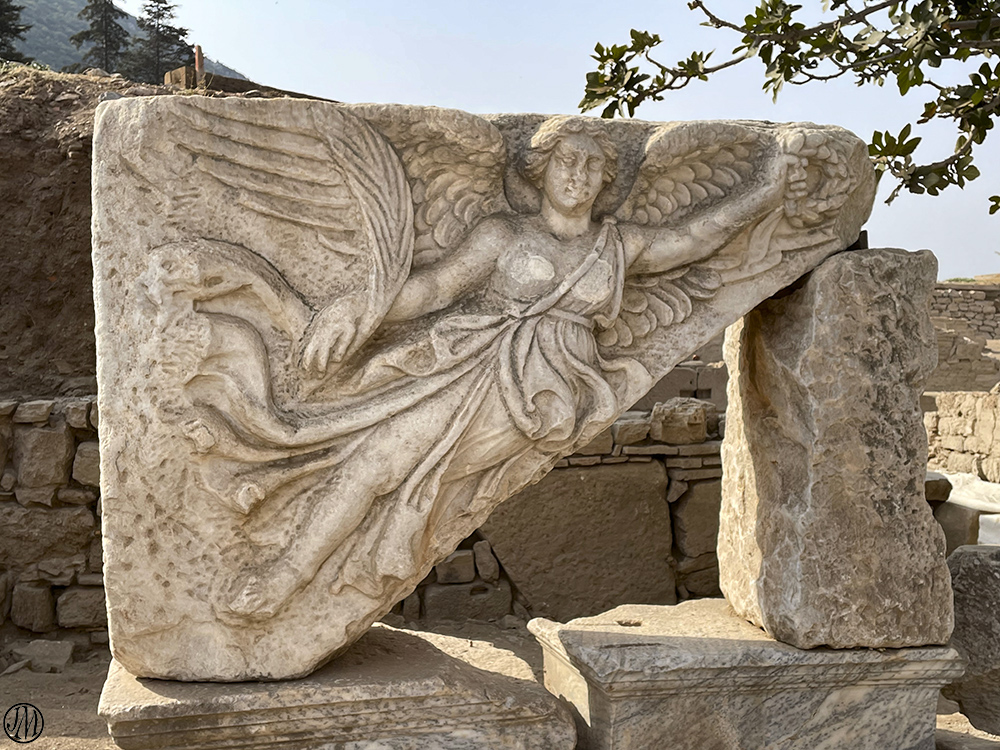
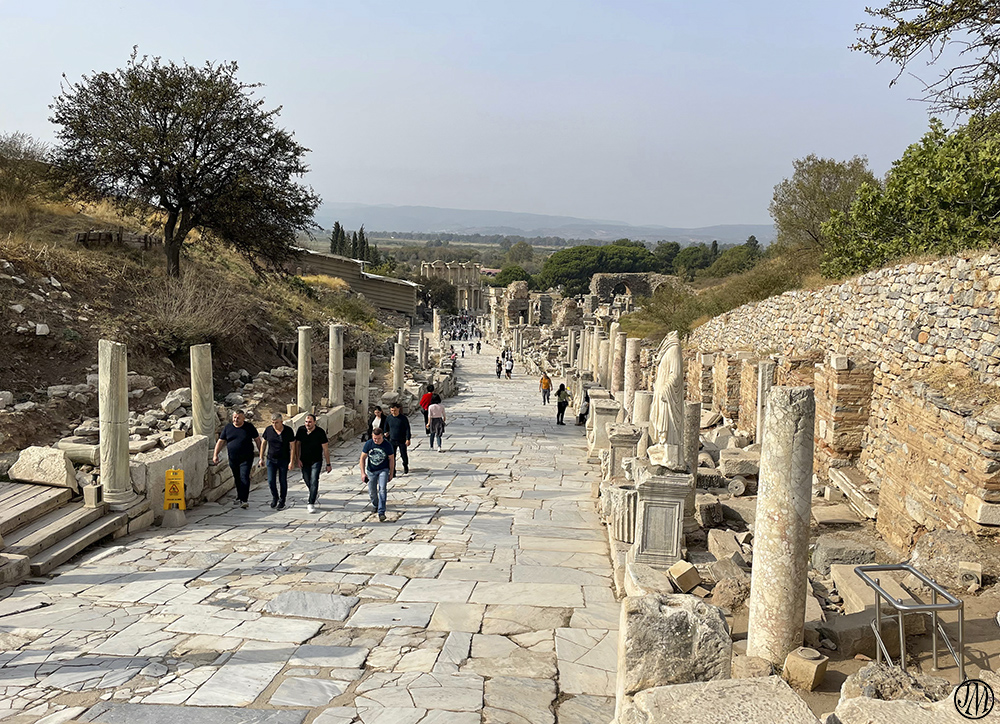
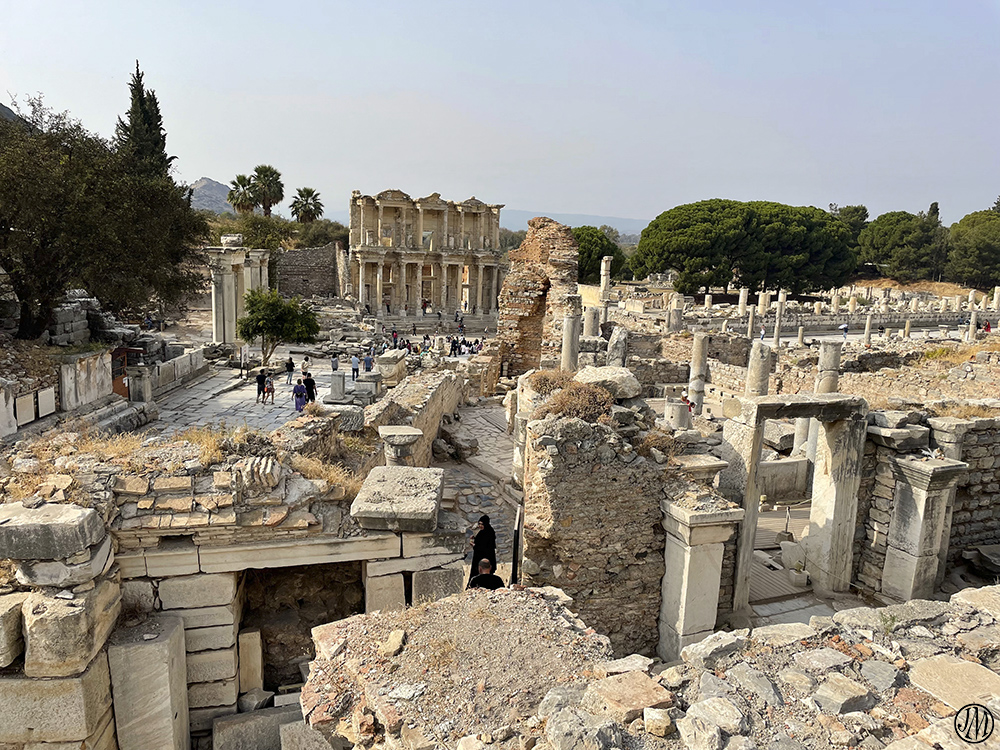
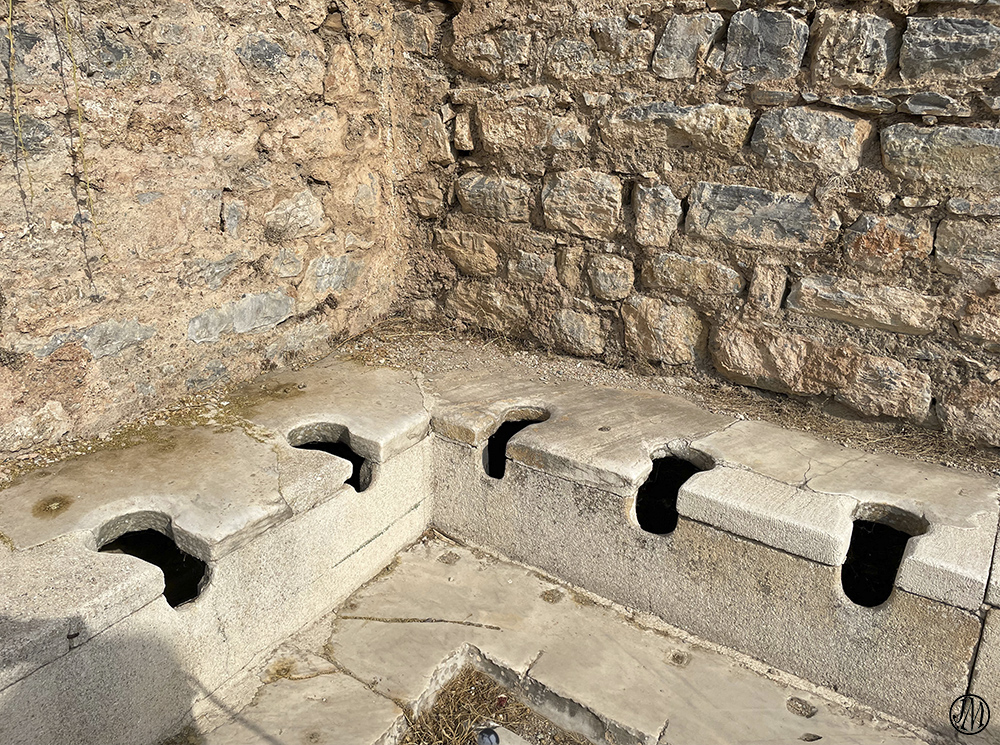
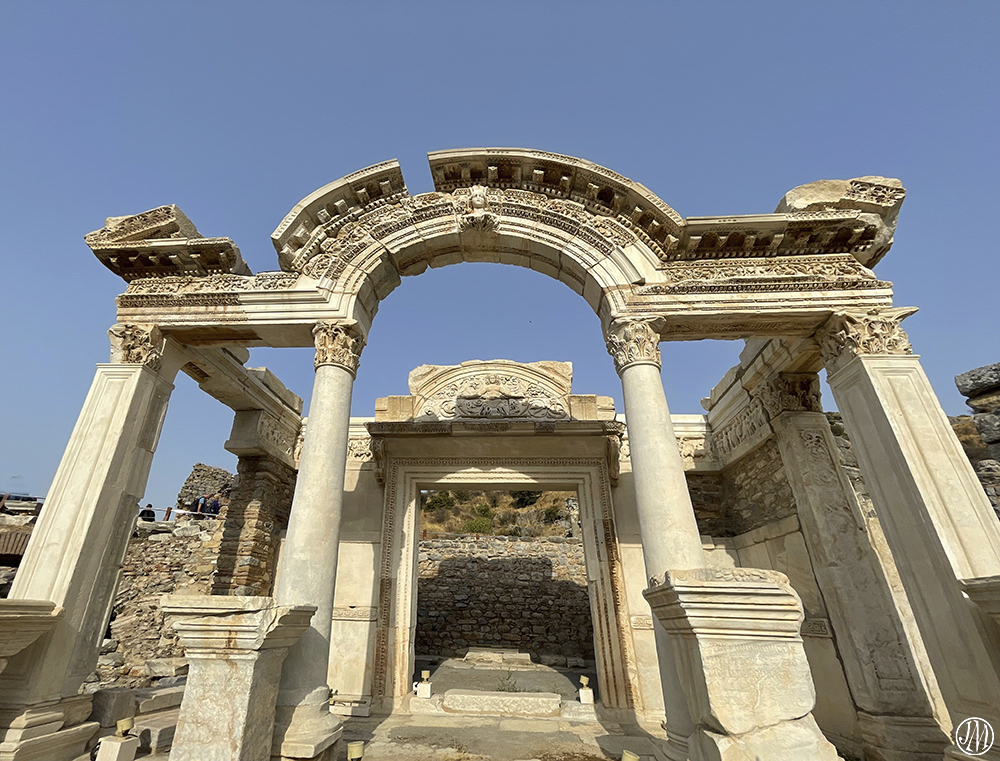
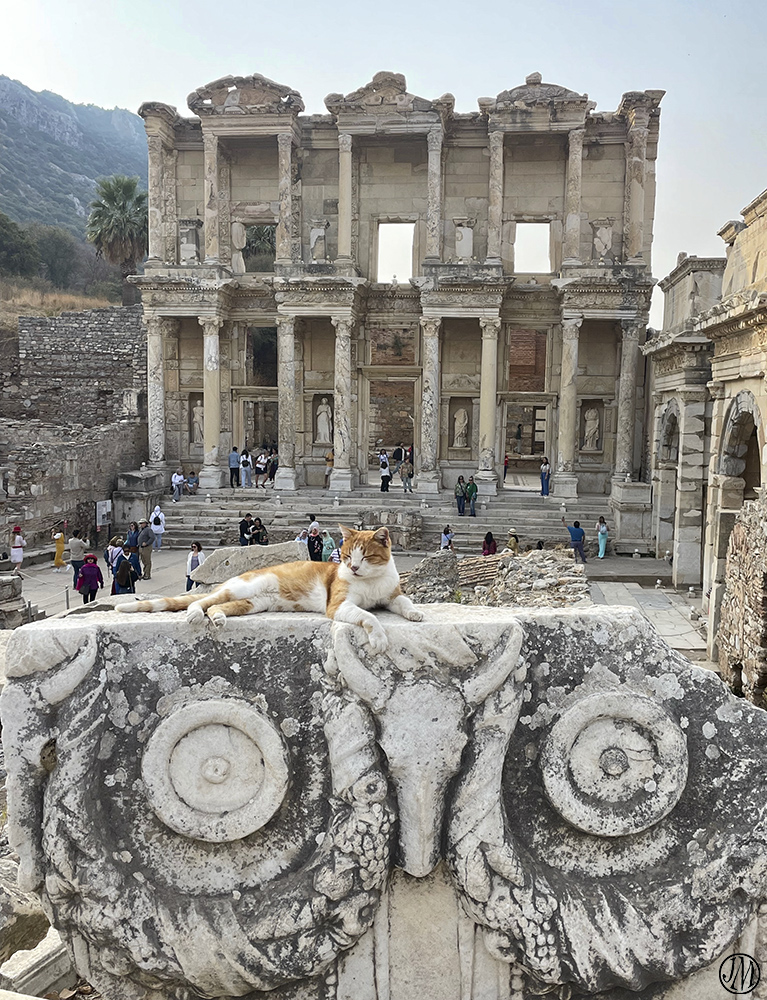
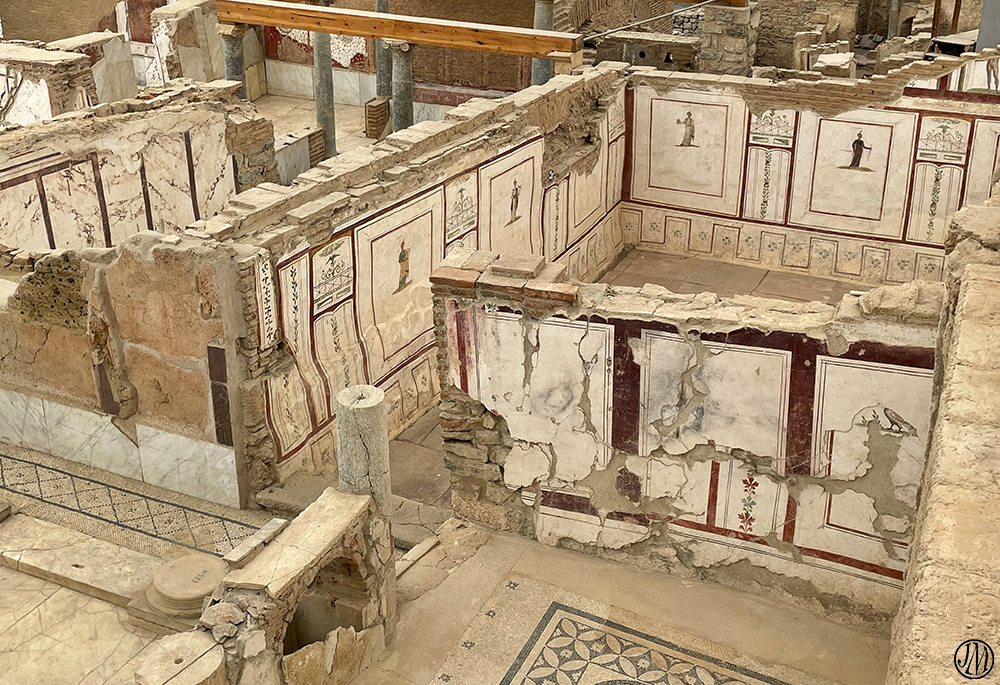
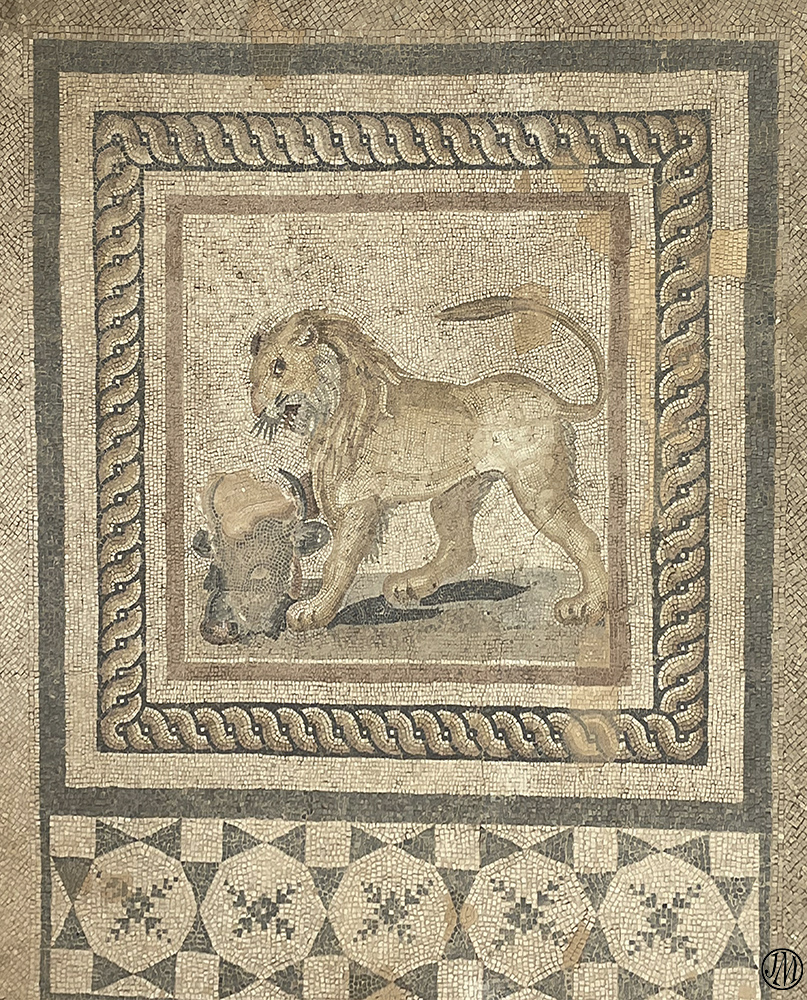
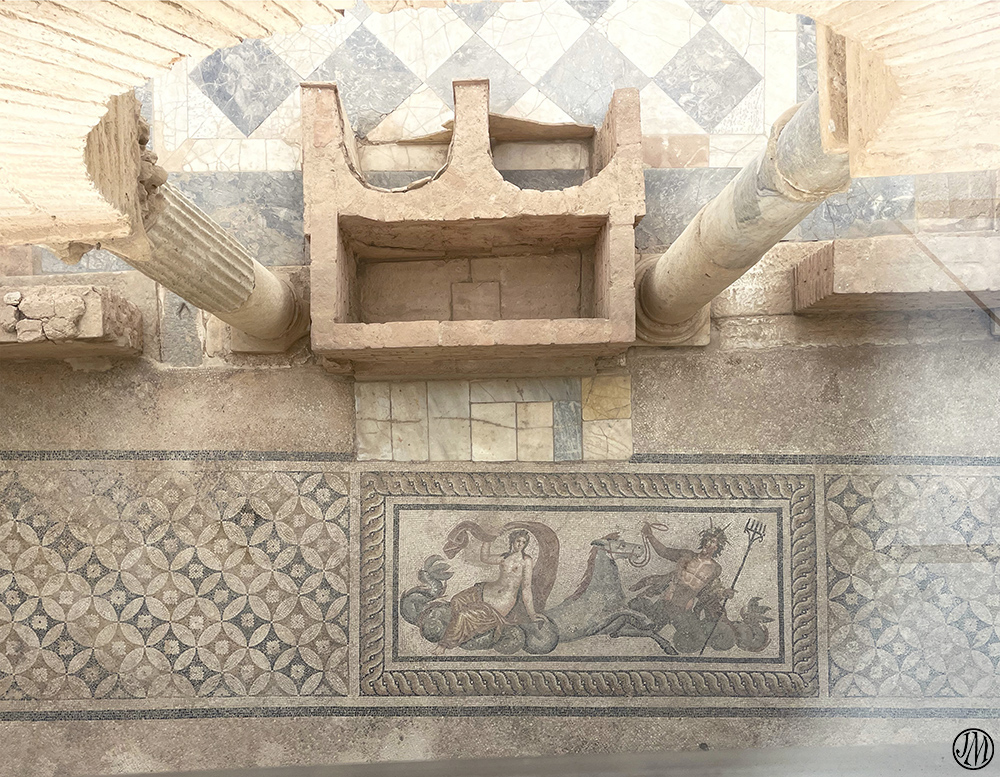
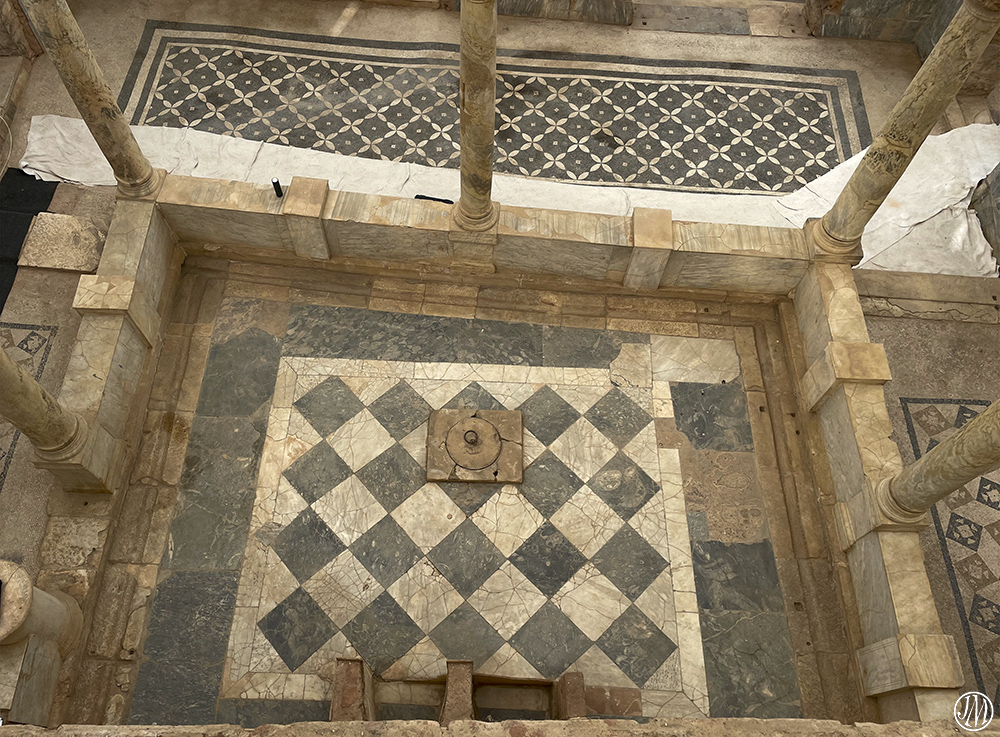
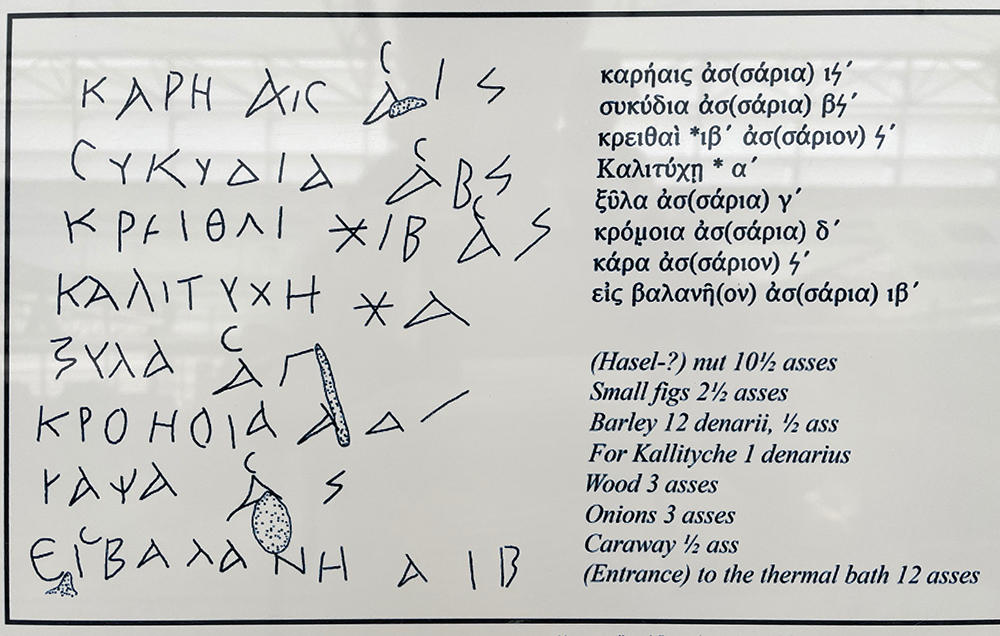
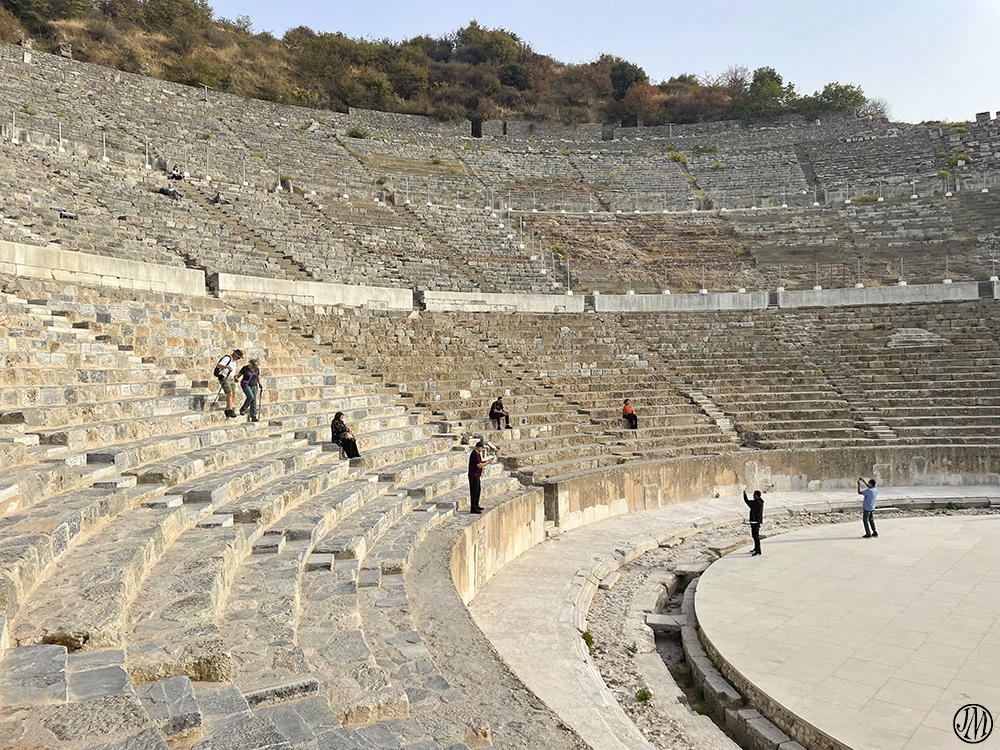
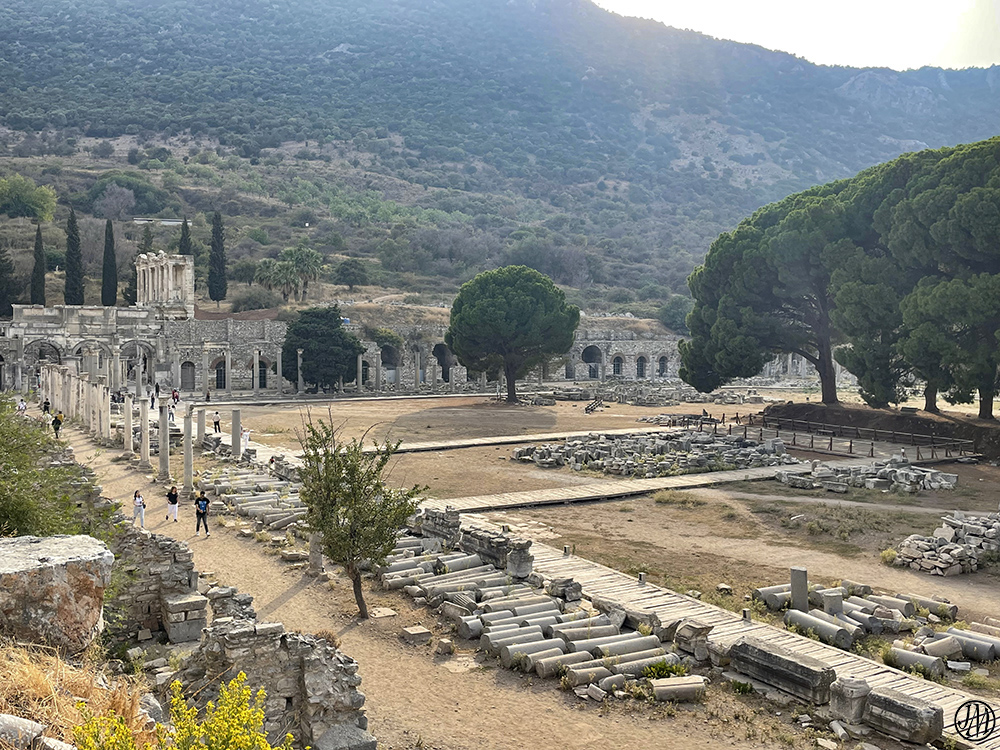
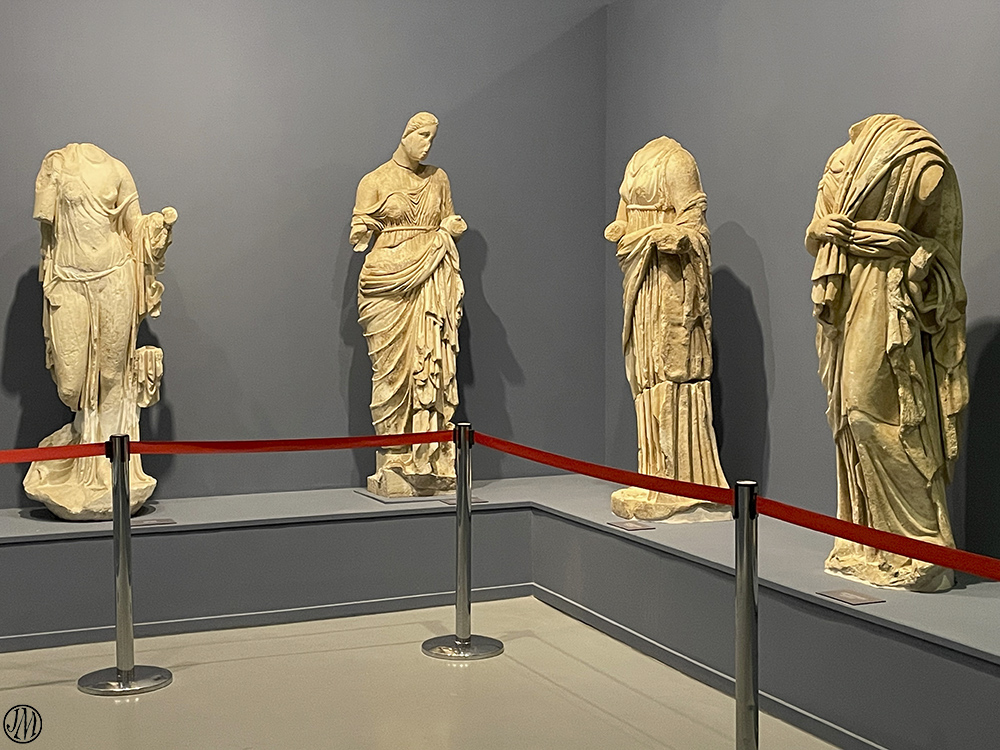
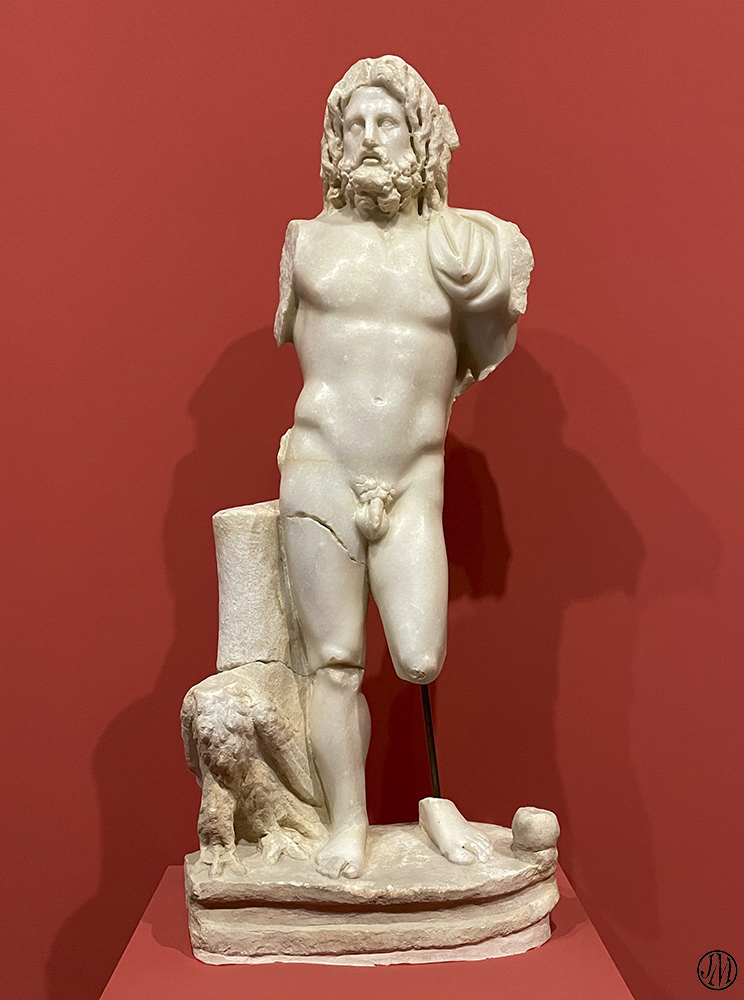
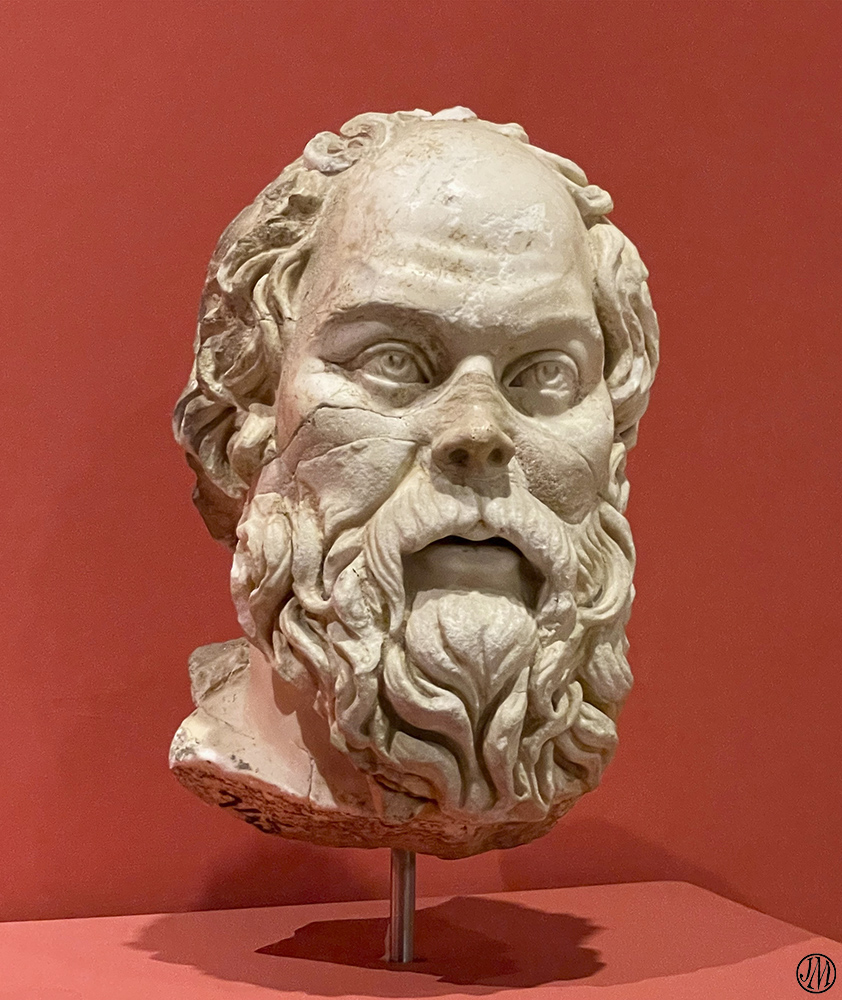
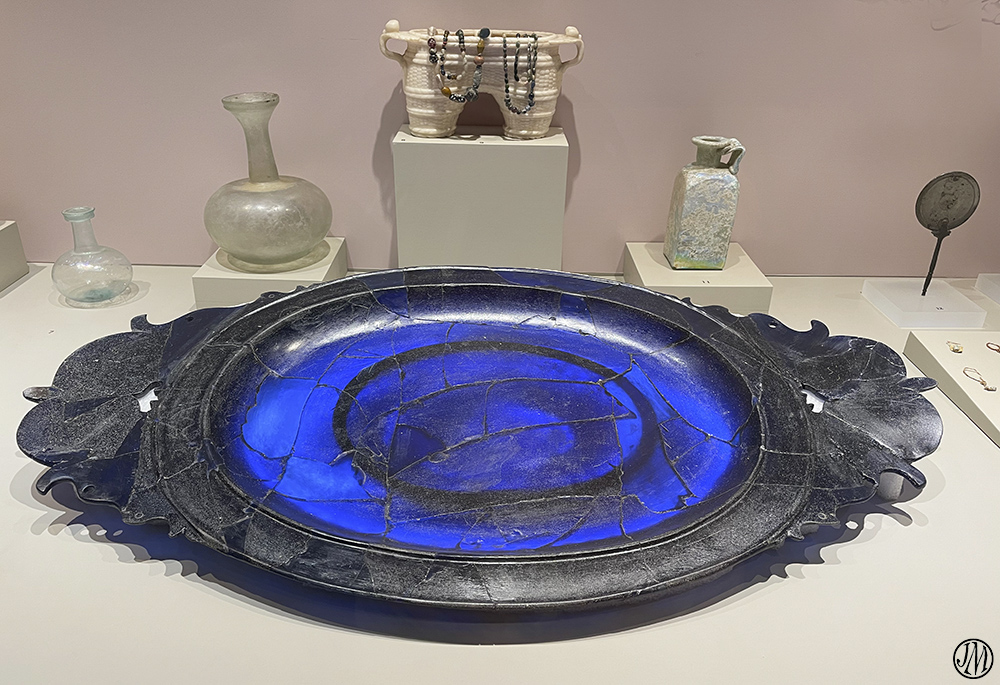
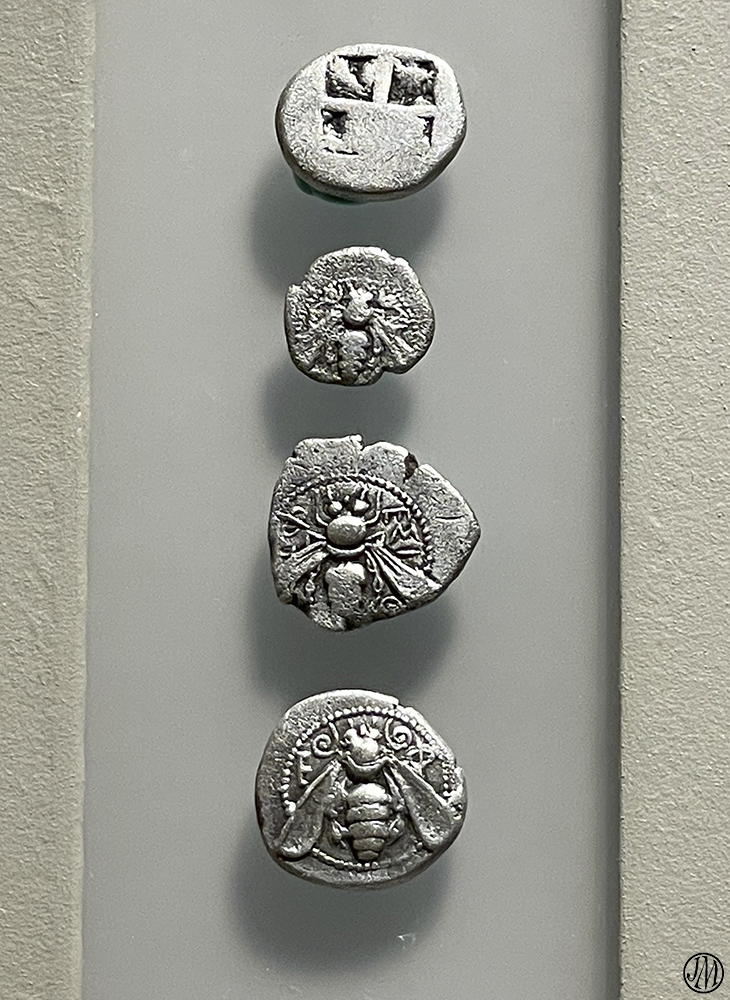
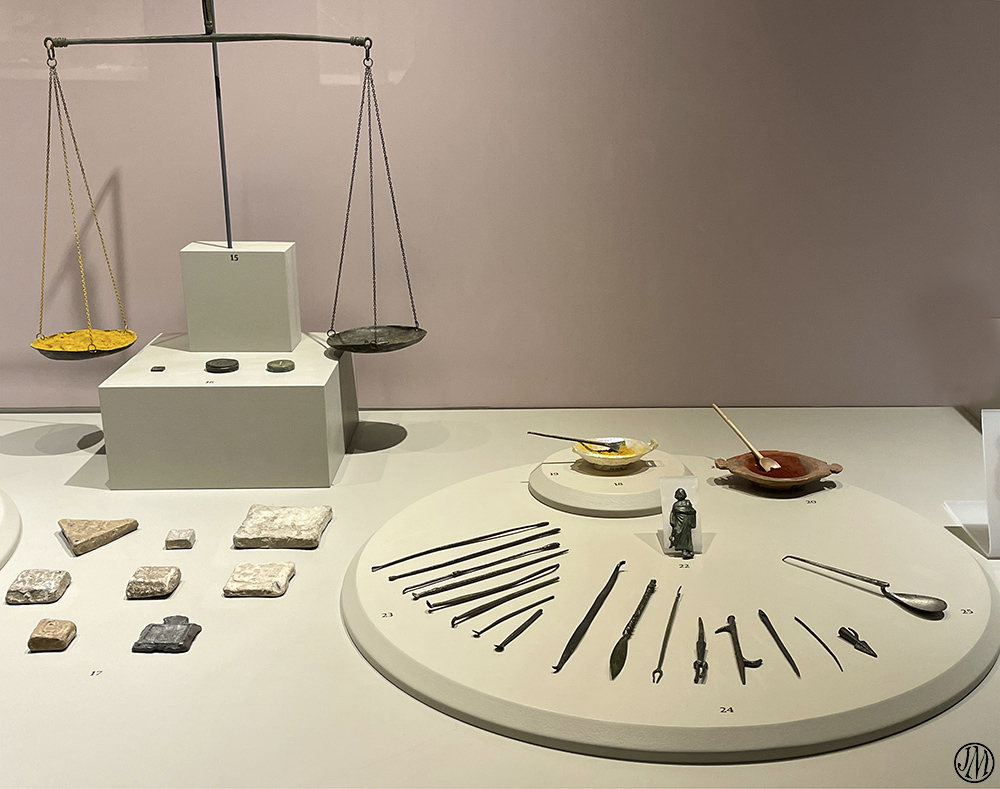
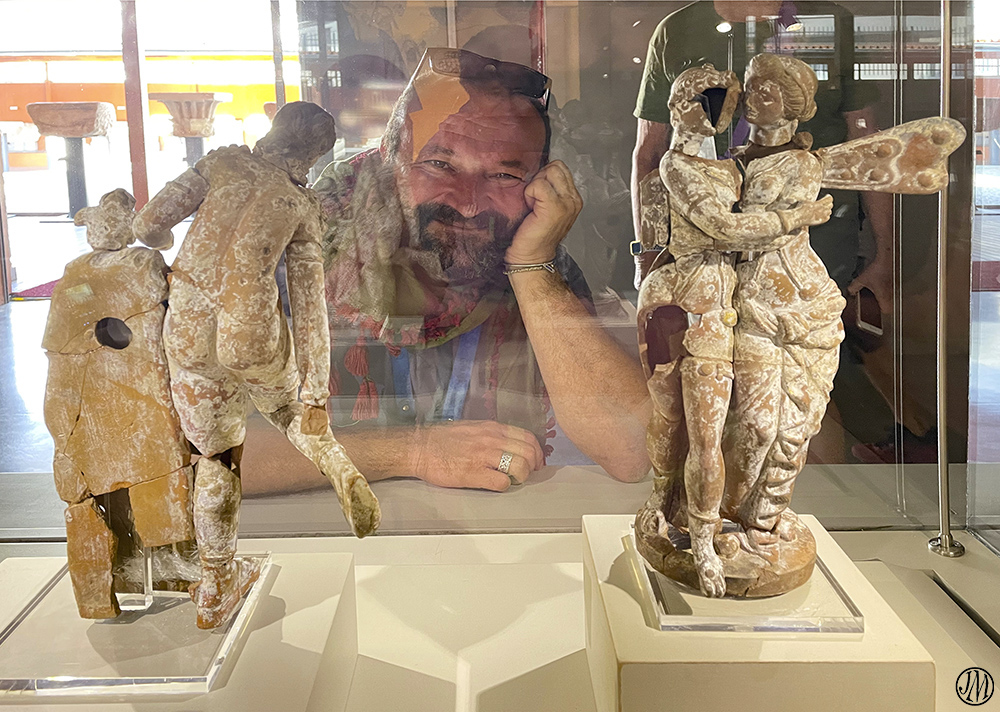
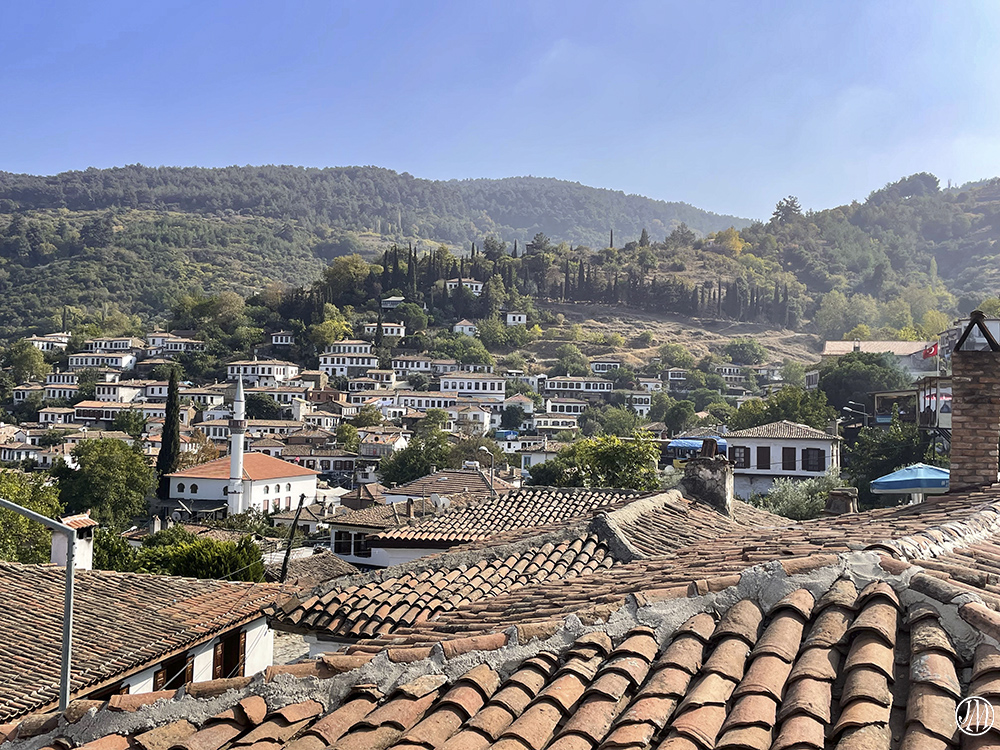
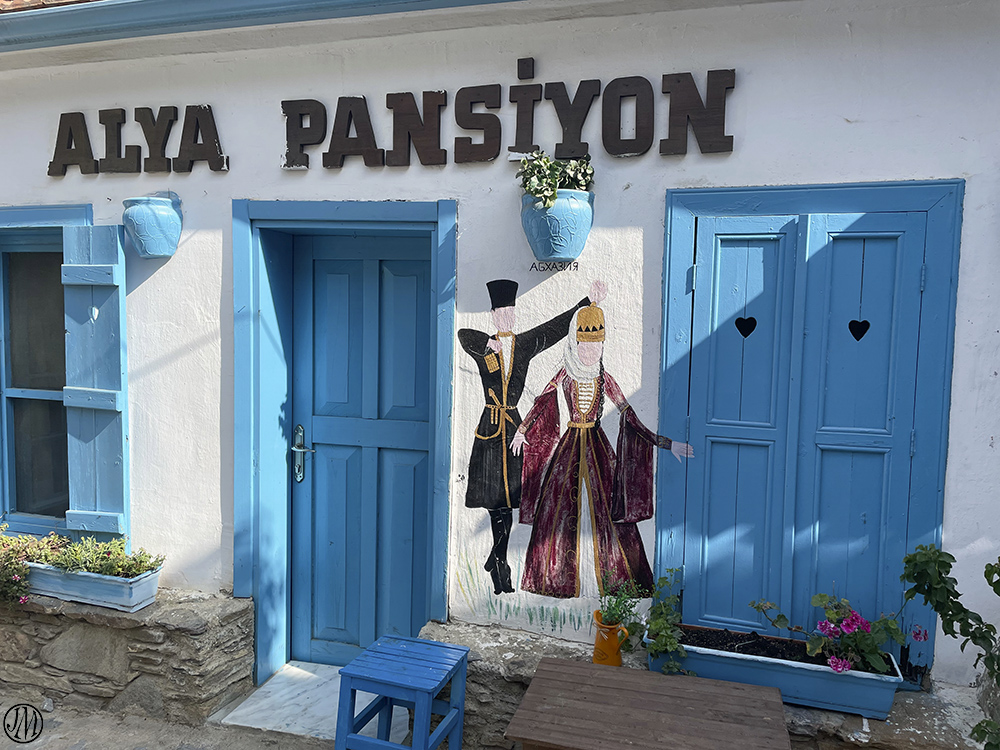
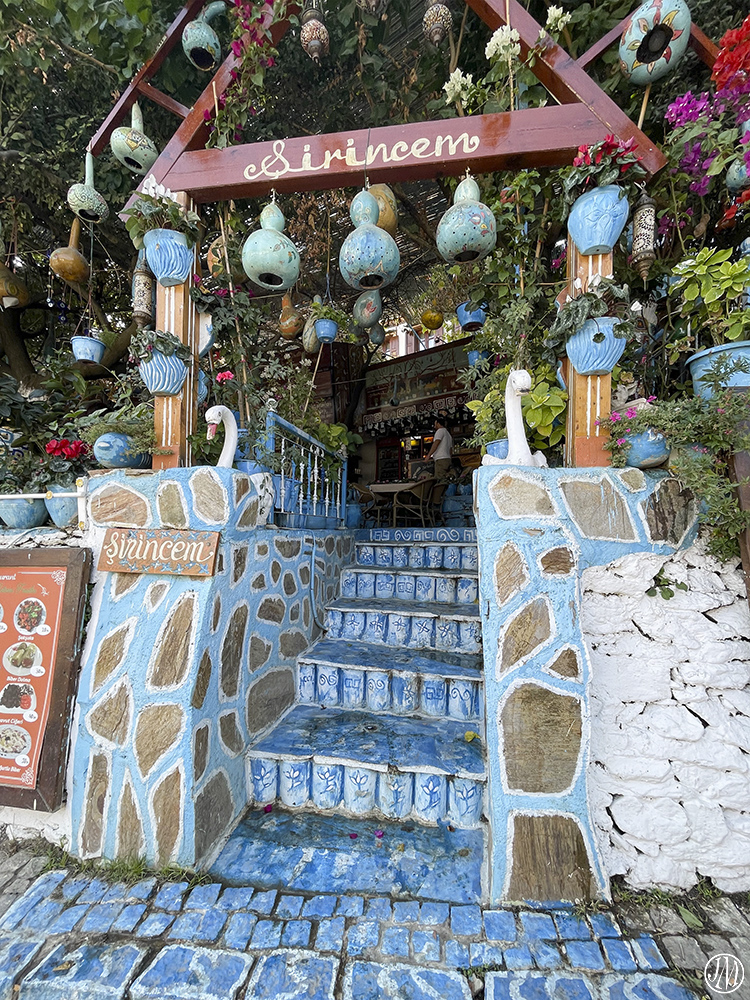
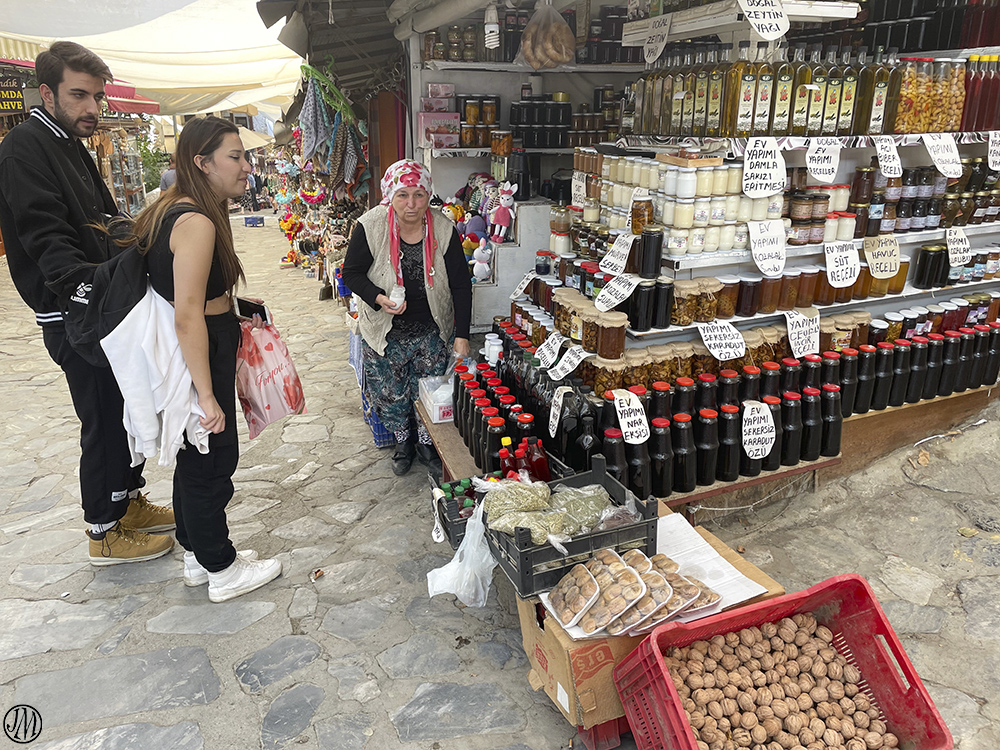
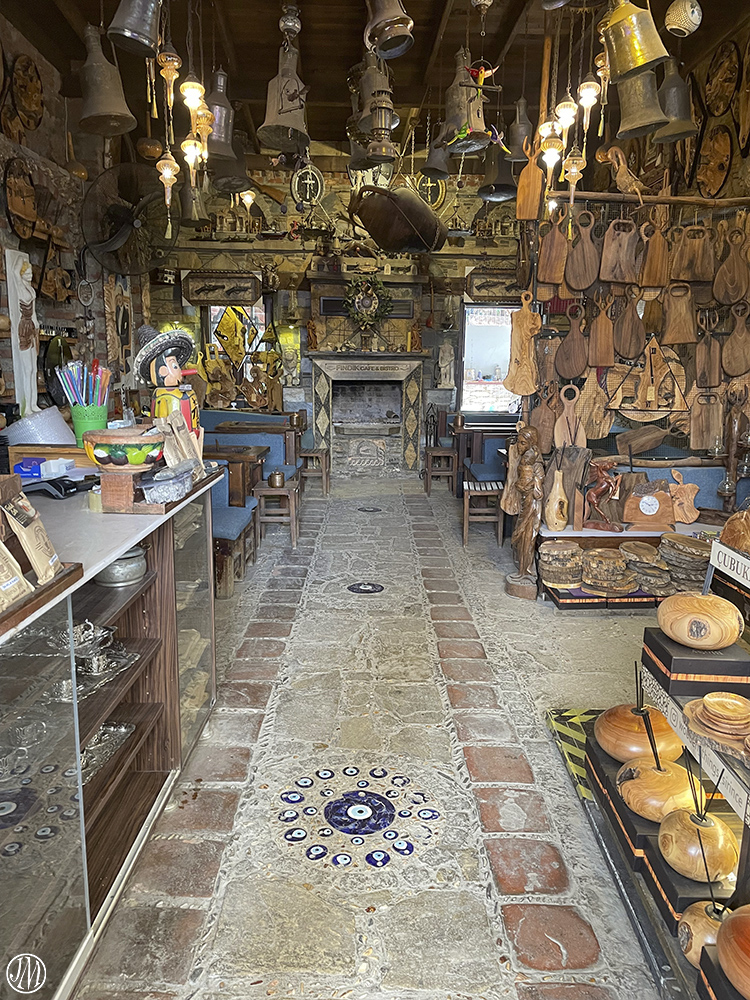
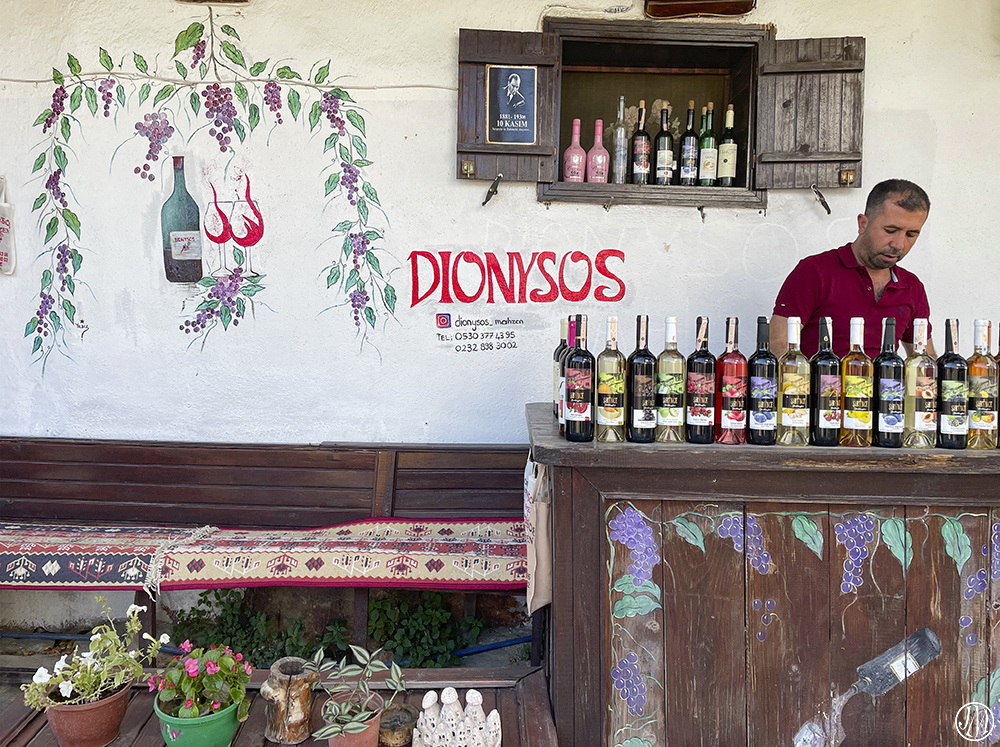
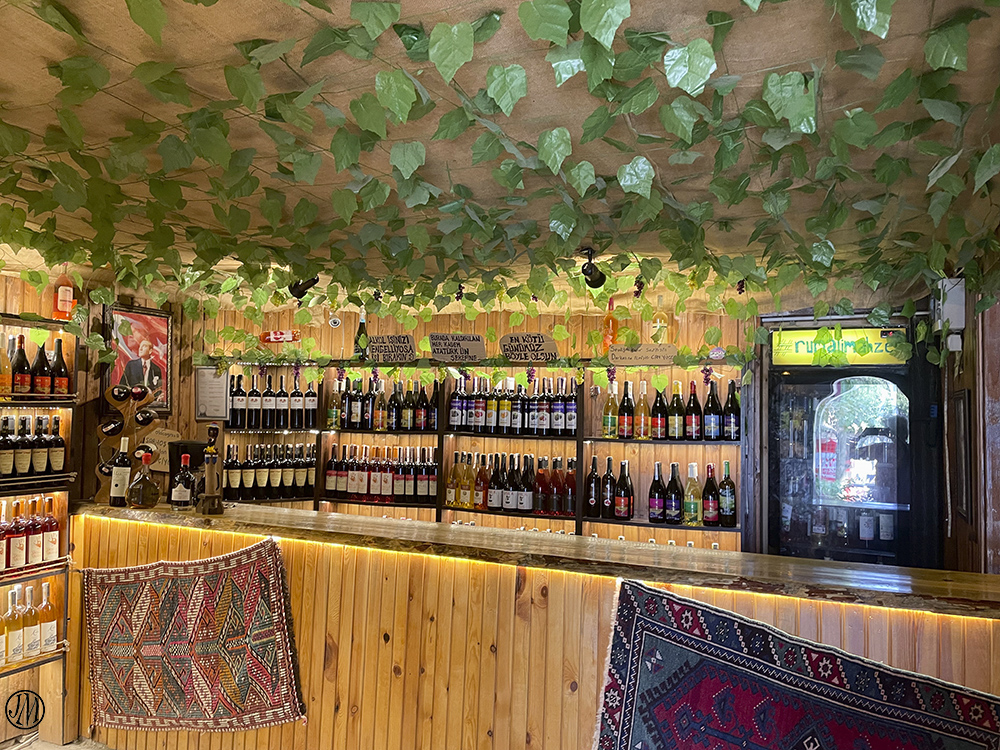
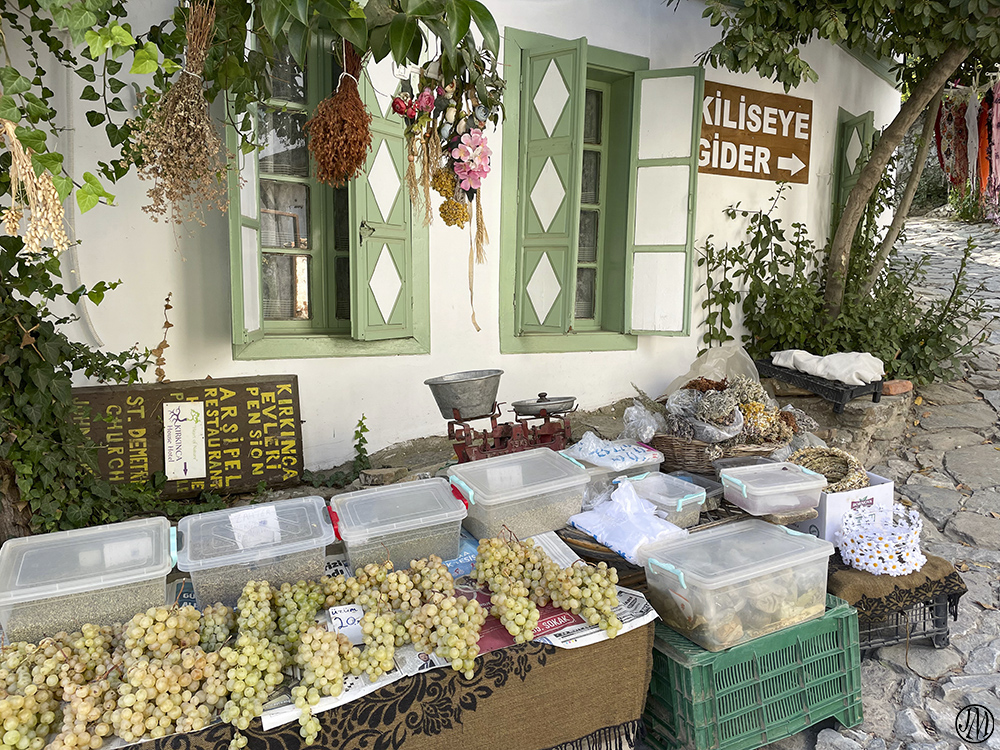
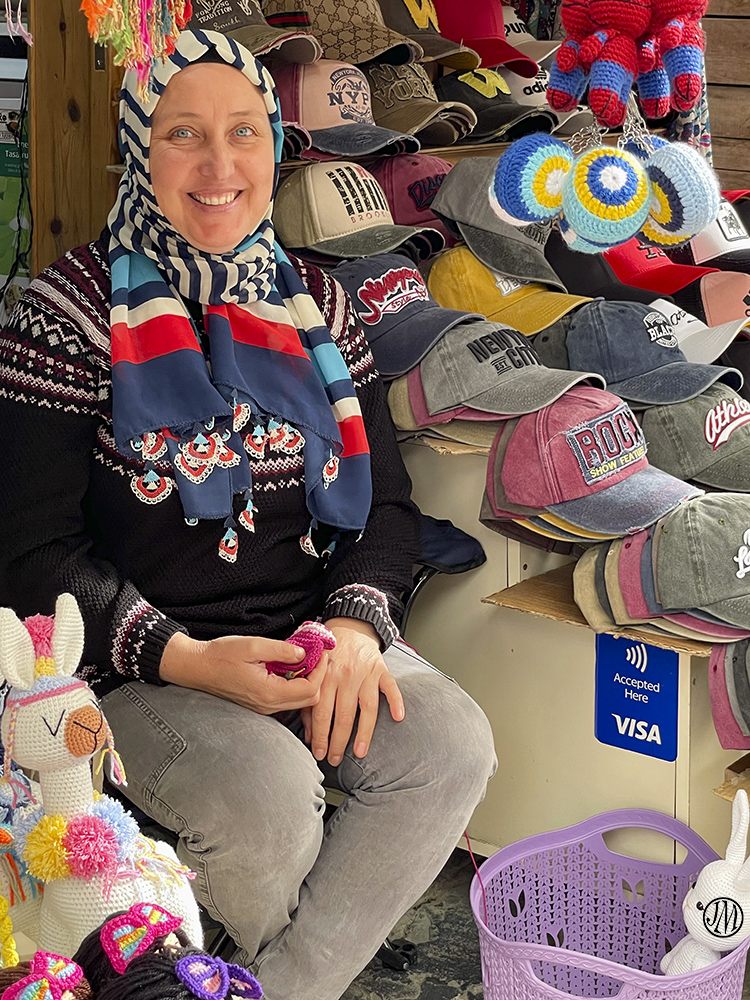
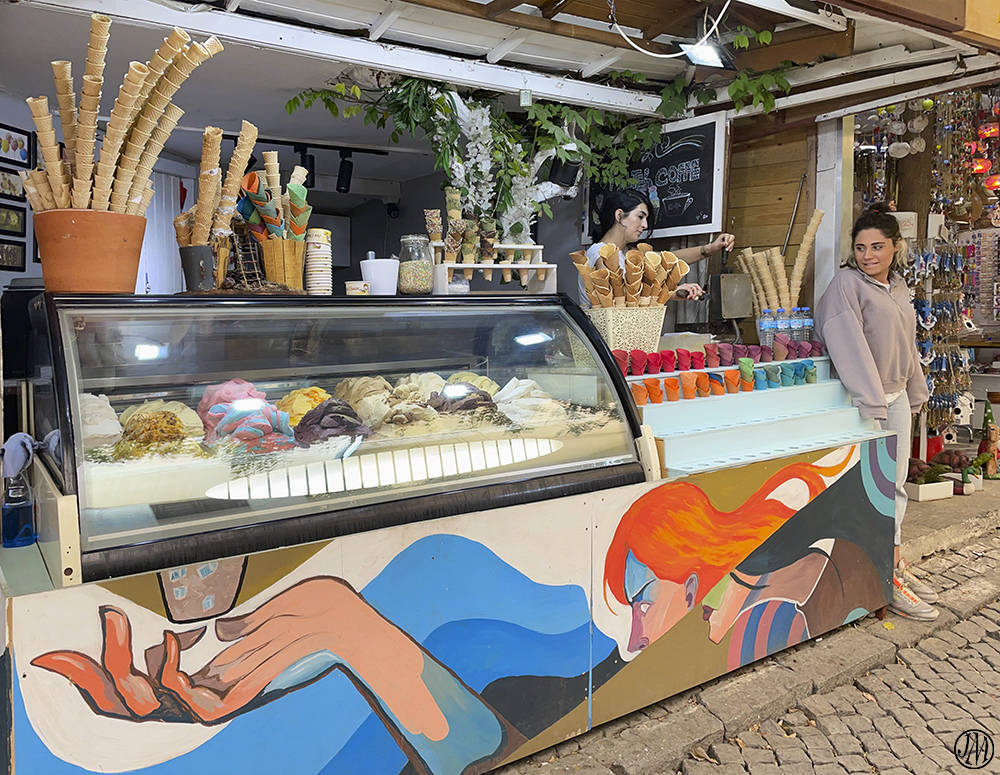

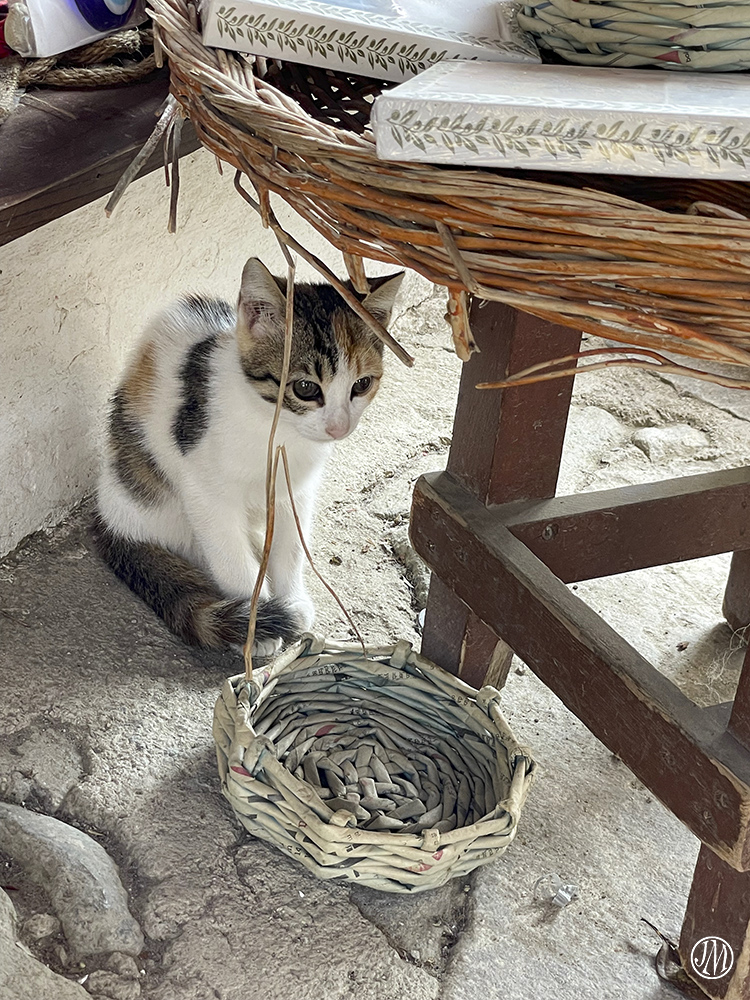
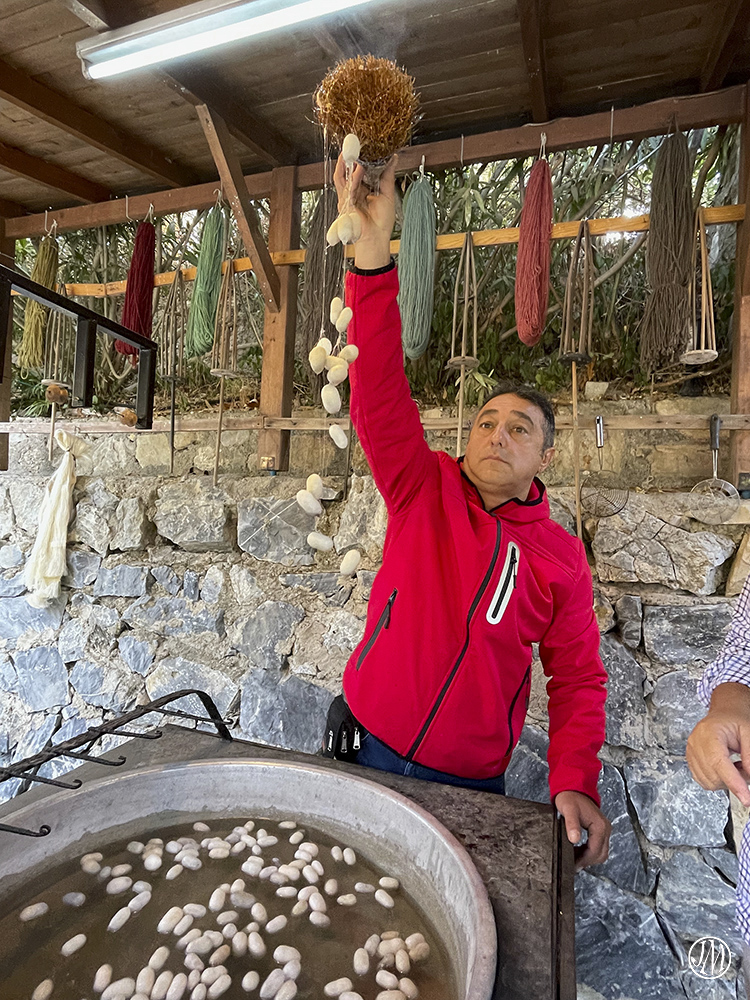
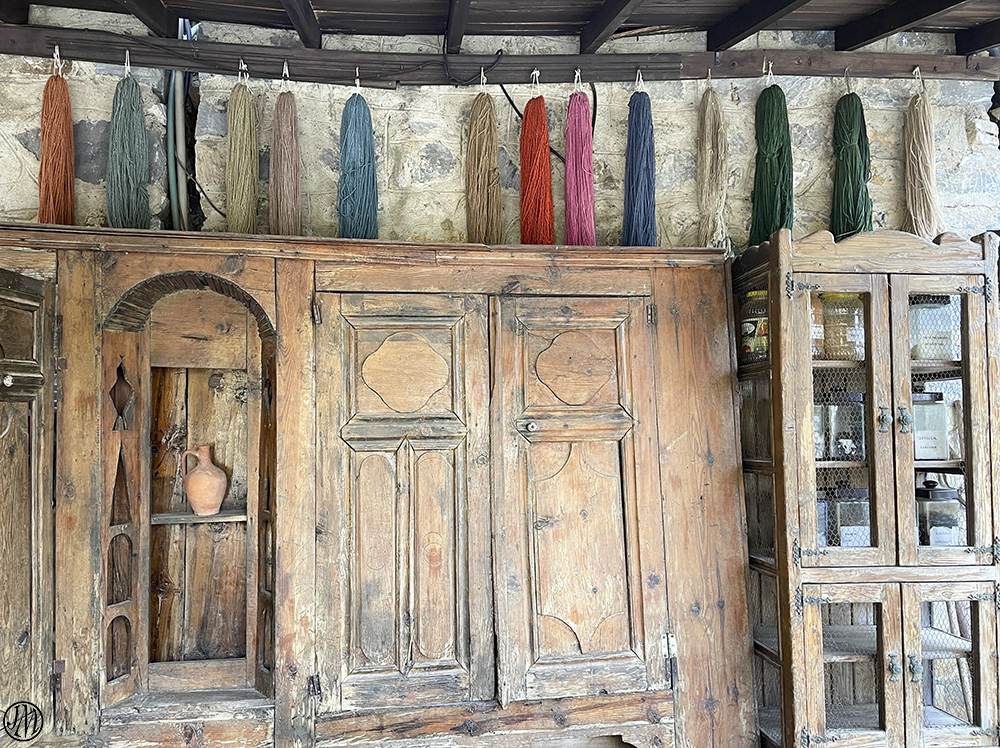
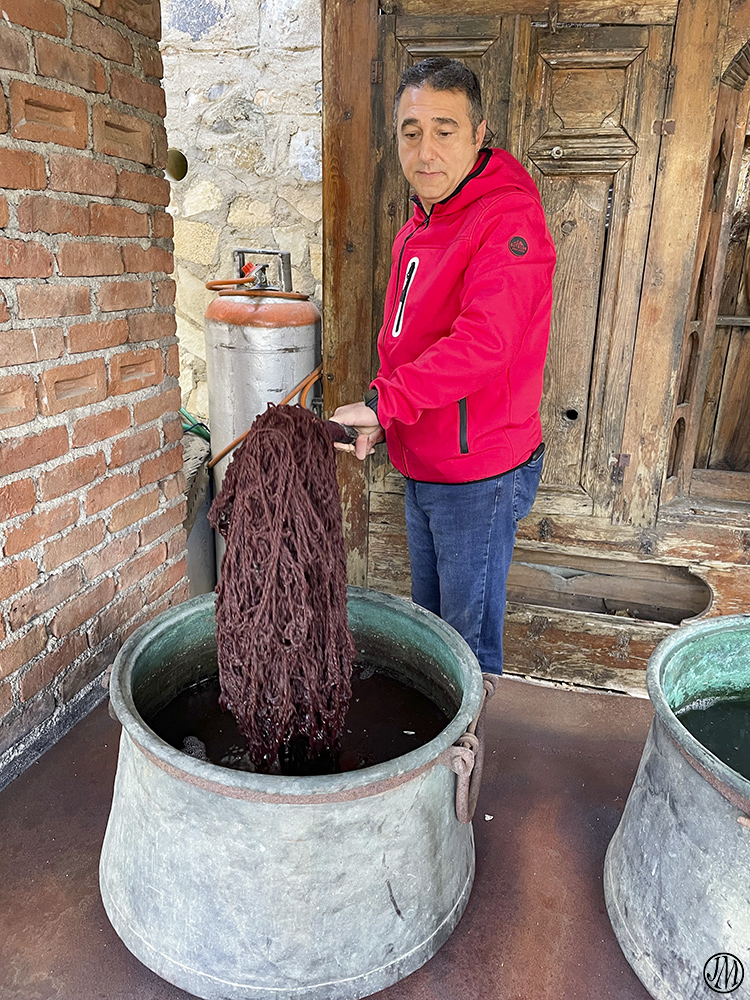
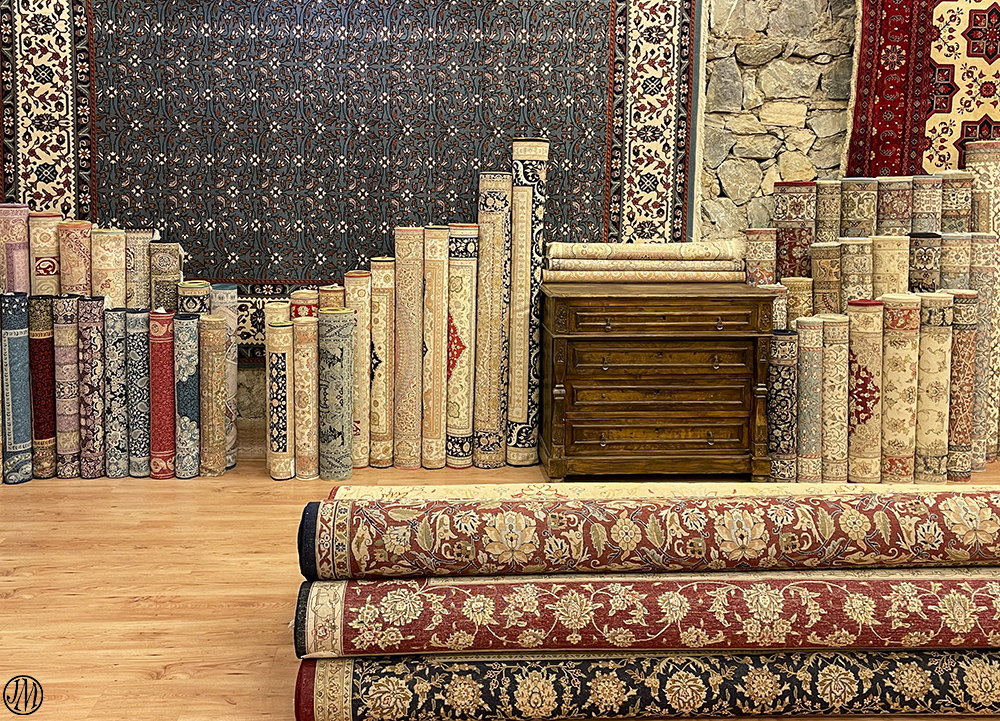
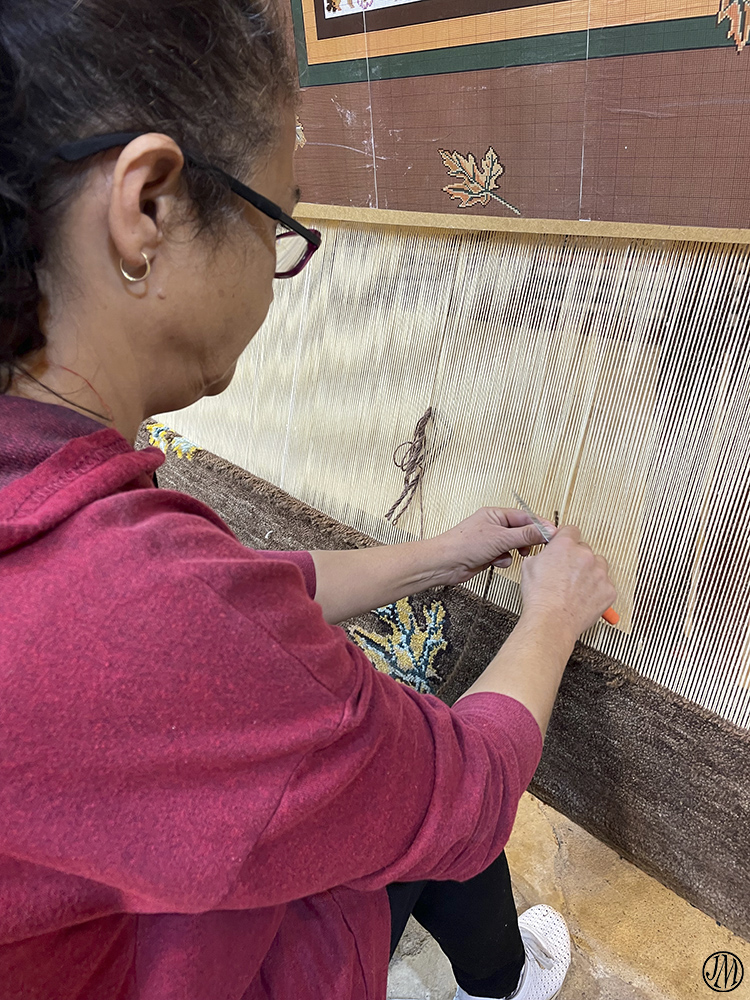
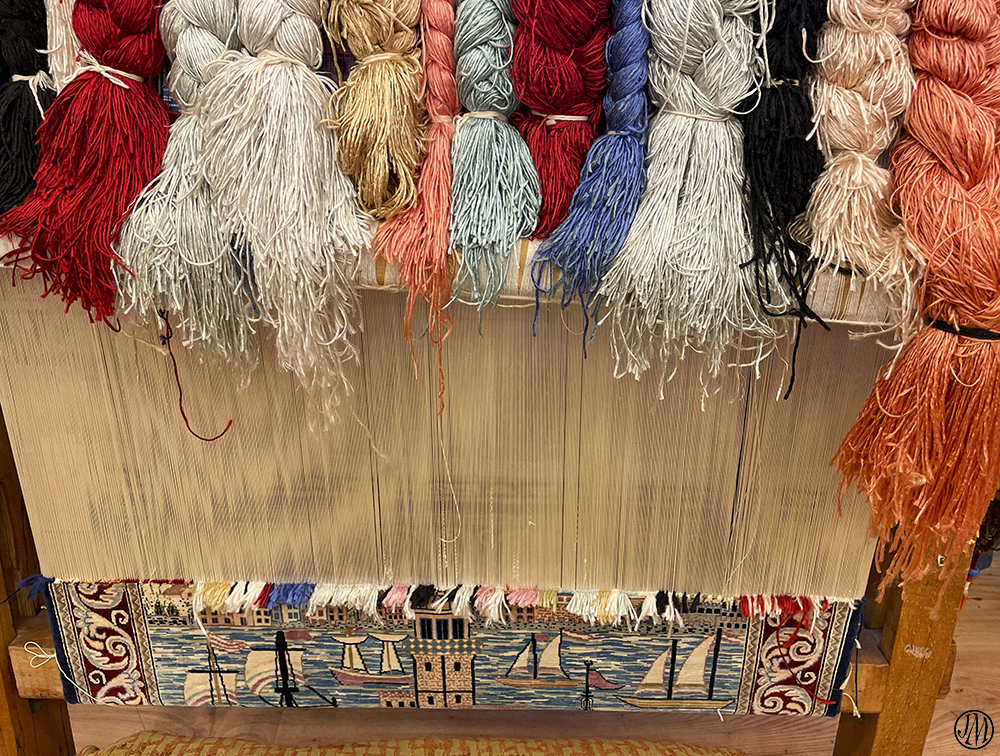
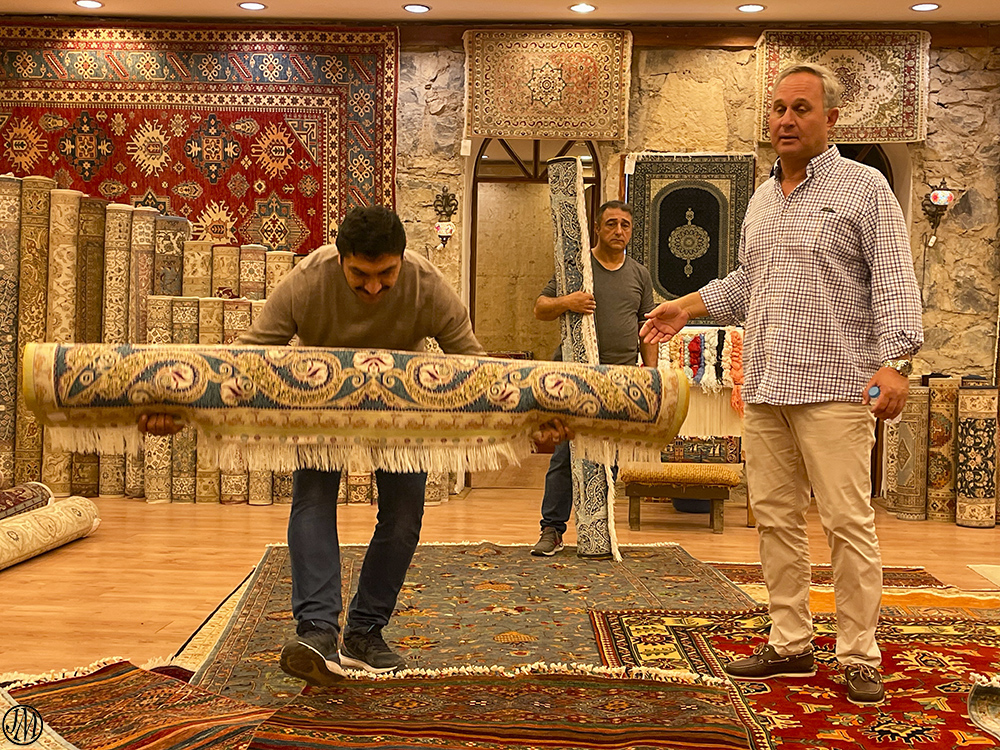
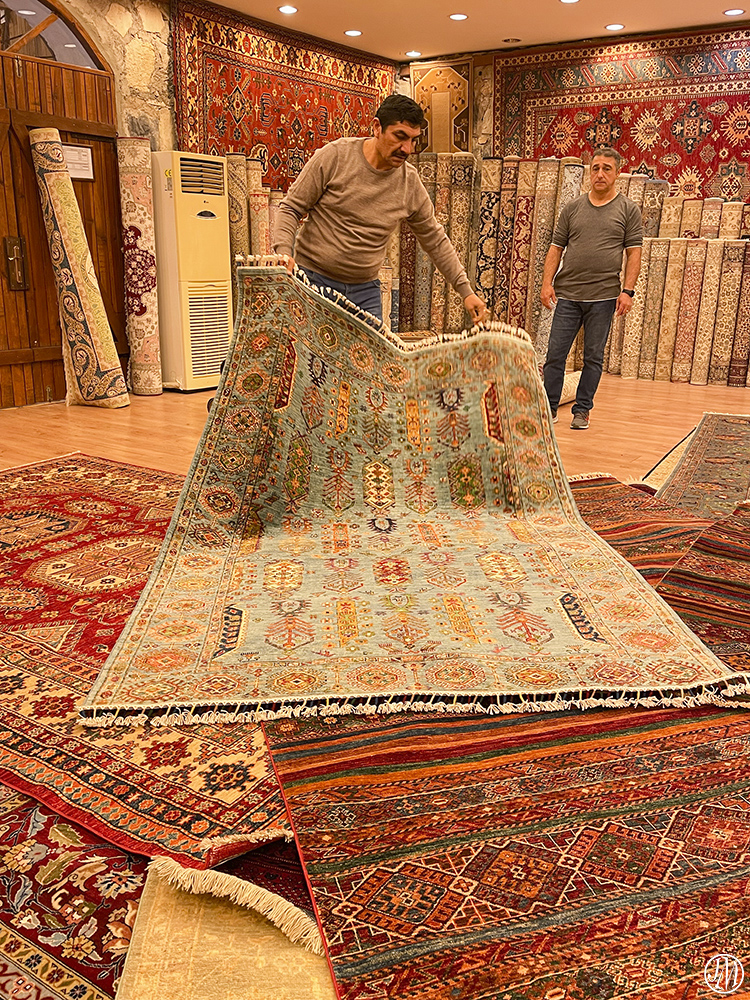
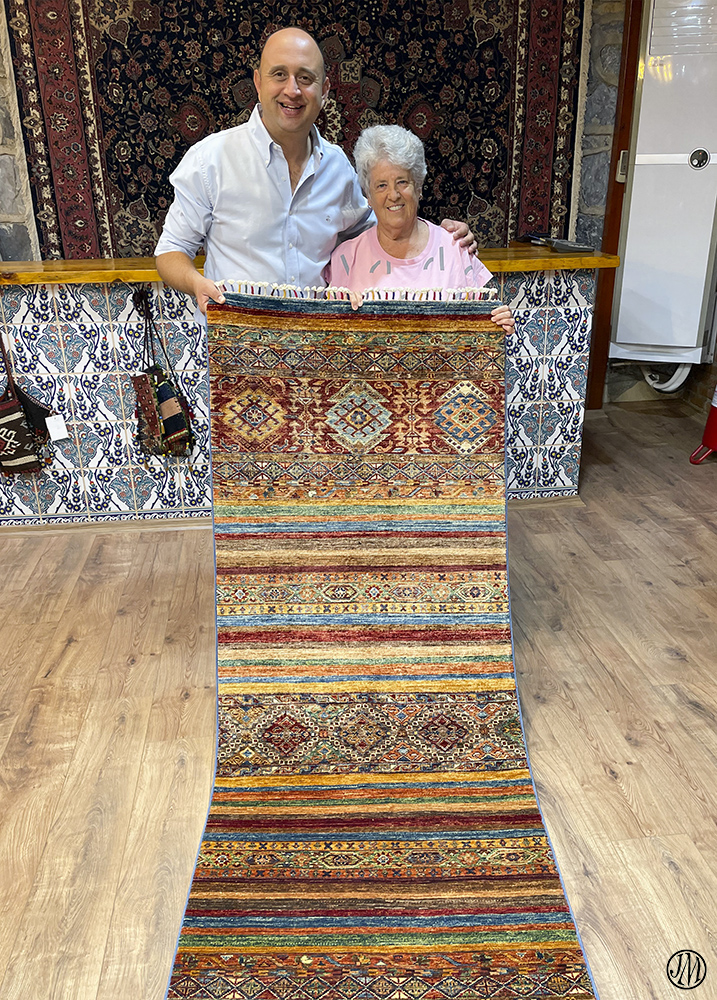

Joanna-every entry has been great. Thanks for chronicling our journey so well. Looking forward to the Cappadocia segments.
I am a former classmate of Roger F. and have visited Turkey twice. Have loved your pictures and commentary. Am looking forward to Cappadocia. Took a hot air balloon ride at sunrise there
a few years ago.
Wonderful photos and commentary. Loved the carpet too! I could feel the heat and history jumping out at me. I also loved the decorations of the modern shops in the town – the stunning blue of one of the cafes quite caught my eye. Thanks for posting.